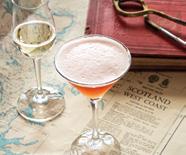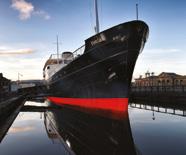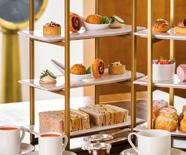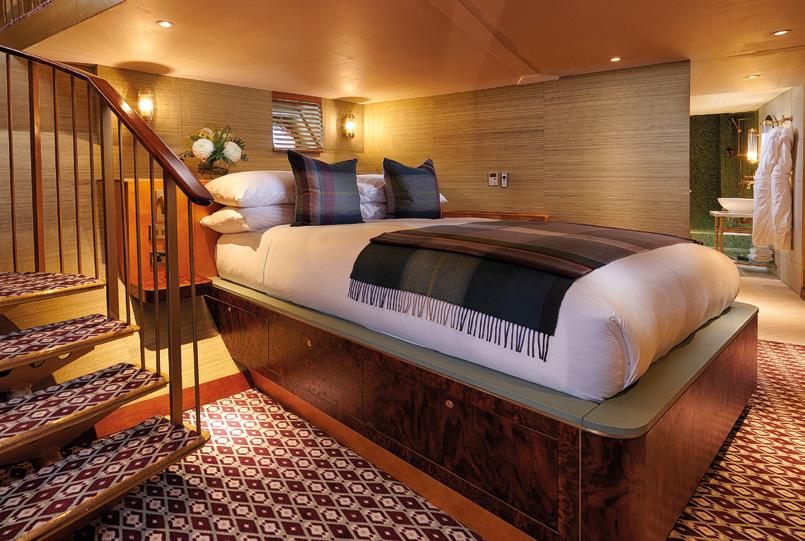
Education Scotland's school inspection results


Education Scotland's school inspection results
Visit george-heriots.com/shop to see 32 different Heriot's branded items, perfect for birthdays and Christmas.
Beautifully crafted from a handmade die commissioned by George Heriot’s School depicting the principal elevation of the Quadrangle. These cufflinks and charms make a wonderful gift for school leaver, a special birthday, anniversary or retirement. Available in gilt (£250) or silver (£225) + P&P.
The charm can be worn on a bracelet or necklace and is available in gilt (£170) or silver (£150).
Please allow 4-6 weeks from placing order to receipt of goods.
www.george-heriots.com/shop

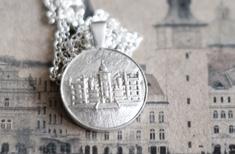

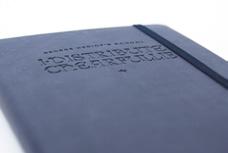
A lovely notebook gift for Herioters. A handy A5 sized, moleskin notebook with hard cover and lined interior pages on both faces.
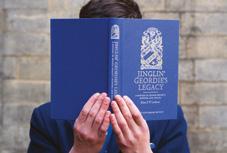
BOOK
A 440-page history of George Heriot’s School, written by former pupil Brian Lockhart, Principal Teacher of History under Dr. Dewer.
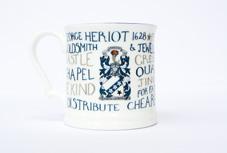
HERIOT'S HISTORY MUG
Lovingly hand-made, hand-painted bone China mug, full of Heriot’s history.
It has been a busy year as always at Lauriston Place, and this year's Quadrangle celebrates events, news and stories from across the School, the Former Pupil community and the broader Heriot's family.
On page 34 you can review what has been the most wonderful year of commemoration of George Heriot’s 1624 legacy and the hugely successful We are all George Heriot campaign We witnessed the strengthening of our community connections and we all had the opportunity to ‘distribute chearfullie’.
This magazine exists thanks to the amazing stories we receive from our Former Pupil community. If you have any stories or news you would like us to consider for Issue 45, please share with the Development Team.
Advertising
Quadrangle reaches former pupils, parents and friends of the school. To discuss advertising opportunities, please contact the development office.
Keep in touch
T: 0131 221 6716
E: development@george-heriots.com
W: www.george-heriots.com/being-a-herioter
Write to us
Development, George Heriot’s School Lauriston Place, Edinburgh EH3 9EQ
We hope you enjoy hearing from Heriot’s. If at any stage you no longer wish to receive magazines, updates and invitations from Heriot’s, just let us know.
Quadrangle designed by Richy Lamb –richylamb.com. Printed by J Thomson.
Quadrangle packaging: The polylope enclosing the magazine is 100% recyclable. It is made from polypropylene, a waste product of the petro-chemical industry and its make-up allows it to be included in general waste plastic recycling streams to be remade into alternative recycled plastic products. Recipients can put it into plastic recycling bins for collection by local council or waste collection services.
If you have enjoyed this copy of Quadrangle and would prefer to have received your copy by post, please email the Development Office at dev@george-heriots.com
George Heriot’s School is governed by George Heriot’s Trust. Scottish Charity Number: SC011463.
The team has had quite a year! When we came together in the Spring of 2023, we had no idea what lay ahead, and with amazing campaigns such as the Bob Neill Tribute Evening and the We are all George Heriot campaign, alongside meeting literally hundreds of Former Pupils, we have been ‘developing’ further in our own ways. It has been a year of house moves as Eilidh decamped to North Edinburgh, a little too close to Fettes for our liking and has become an aunt for the second time. Julie came back from maternity leave in January after welcoming her second son. Julie has delighted in reconnecting with many familiar faces. Miranda has moved back to Edinburgh from her Borders home and re-certified her Chartered Marketer status. Darren hit the books for one final year and was awarded a 2:1 BA (Honours) Religion, Philosophy and Ethics, bringing 5 years of part-time study with the Open University to an end; a Master's may yet be on the cards. This October we will join Ailsa to celebrate her marriage to Robel: we are sure you will join us in congratulating her. What a year!

We are growing Former Pupils events with the aim of offering something for everyone. Some events are part of a series, such as the Coffee Mornings. Others are individual events to thank, recognise or commemorate different strands of the wonderful Herioter community. All events can be booked via the Herioter Hub or by contacting the Development Team directly.
2024
Coffee Mornings
Wed 29 Aug, Wed 30 Oct, Wed 27 Nov, Wed 18 Dec, Wed 29 Jan, Wed 26 Feb, Wed 26 Mar, Wed 30 Apr, Wed 28 May, Wed 25 Jun, Wed 27 Aug
Council Room – George Heriot’s School, 10.00 – 12.00
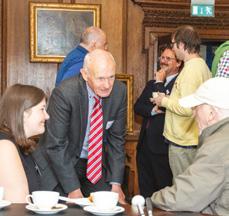
Join the Development Team and other FPs to share news, network and talk about your memories. Book your free place via Herioter Hub.
We are all George Heriot Gala Dinner Fri 11 Oct, 18.30 – Midnight Prestonfield House
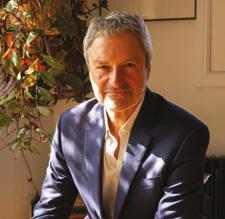
The end of the We are all George Heriot campaign sees a big night of entertainment featuring broadcast Journalist Gavin Esler, magician & mind reader Grant Mitchell, with compere, Edinburgh’s own, Grant Stott. Dancing to the Eliot Murray Big Band. Tables of 8, 10 or 12.
London Drinks event Thu 28 Nov, 18.00 – 21.00
The Old Queen’s Café, 66 Old Queen St, Westminster SW1H 9HP

Free event for Herioters based in London and surrounding area.
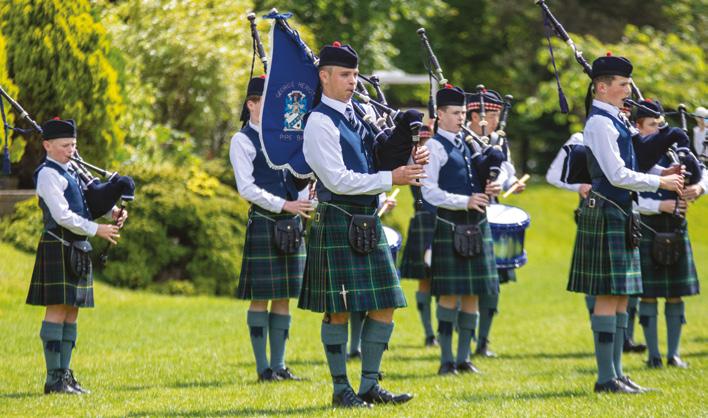
2025
Burn’s Supper – George Heriot’s Pipe Band Fundraiser
Fri 24 Jan, Refectory – George Heriot’s School, 18.30 – 22.30
To celebrate the birthday, life and poetry of the Scottish Bard while raising money for the Pipe Band to support performance events, fund new tartan and pipe band equipment. Single tickets £90pp or tables of 8.
Heriot’s visits York
Thu 20 Feb, 18.00 – 20.30 drinks in central York, venue TBA
Inspirational speakers for Careers Week
3–7 Mar, 15.30 – 17.30
George Heriot’s School
Can you inspire the next generation of Herioters to work in your field?
Volunteers wanted for a short series of 40 minute career talks to S5 – S6. Please contact the team if you are able to speak about a specific vocational area.
Heriot’s in New York for Tartan Week 3 – 6 April
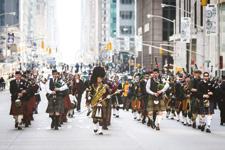
Herioter Pipe Band Recital + drinks event, Friday 4 April; Tartan Week Parade Saturday 5 April.
After Many Years Reunion Classes of 1985-1995
Sat 10 May, 10.30 – 14.30
George Heriot’s School
Join Former Pupils from 1985 to 1995 for a day of memories and networking with a buffet lunch and tours.
June Day
Mon 2 Jun
George Heriot’s School
Celebrate Founder’s Day and the legacy of George Heriot, 09.30 onwards. Tickets are mandatory.
Public lecture Sir Brian Langstaff: The UK Infected Blood Enquiry
Wed 4 June 18.00 – 20.00
George Heriot’s School Hall
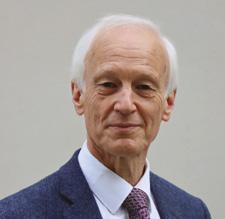
A unique opportunity to hear from Former Pupil Brian Langstaff, Chair of the infected blood enquiry from 2018 –2024.
Heriot’s visits Aberdeen Thu 12 June, 18.00 – 20.30, Venue TBC
Foundation Barbecue
Sat 21 Jun, 10.30 – 14.30
George Heriot’s School
Bringing together Foundationers from all classes to celebrate the work of the Foundation and share stories.
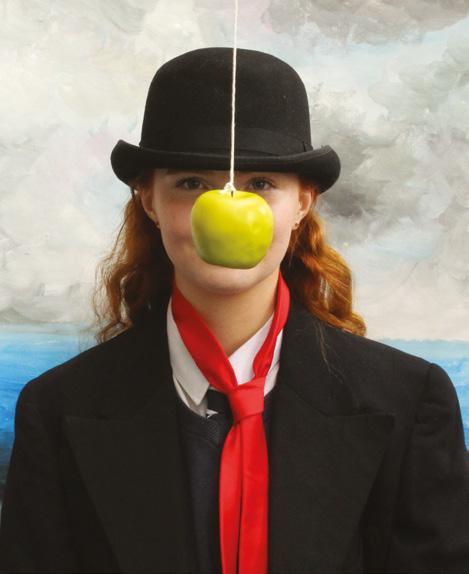
In April, Education Scotland carried out a whole school Inspection of George Heriot’s School and the results, released in June 2024, confirm the School’s sector leading standard across both Junior and Senior Schools.
The School received a rating of 6 (excellent) for ensuring wellbeing, equality and inclusion for children and young people.
‘The wellbeing of children, young people,
their families and staff is at the heart of all actions across the school. Children are empowered to be agents of change as they are proud to be part of a highly inclusive environment. Innovative approaches to promoting inclusion and equality is an outstanding aspect of the School’s work. All children and young people demonstrate exemplary behaviour; they are polite, confident and highly engaged in all aspects of their learning’: Education Scotland.
The School received a rating of 6 (excellent) for raising attainment and achievement.
‘In the Junior School, children’s attainment in literacy and numeracy is outstanding. Children across the Junior school demonstrate a love of reading. Young people’s overall attainment in their National Qualifications is outstanding. Children and young people are thriving and developing an extensive range of communication, teamwork and leadership skills through their participation and contribution to a highly commendable co-curricular programme’.
Teaching, learning and assessment received a rating of 5 (very good) from the Inspection team, as did Leadership of change.
‘Children and young people are highly motivated and have a great respect for learning. They are proud of their school and enjoy positive relationships with staff and their peers. George Heriot’s School was established to provide education to ‘faitherless bairns’ from the city of Edinburgh. This ethos, philanthropy and philosophy continue to remain the foundation of the Heriot’s community. GHS’s charitable foundation has provided free education for over 5,500 children and young people who have lost a parent since its inception.
The School’s founding motto of ‘I Distribute Chearfullie’ is evident across the work of Heriot’s and defines its charitable purpose. The school community demonstrate kindness, care, compassion and respect very well. Heriot’s is a welcoming, warm, and inclusive environment for learning’.
The inspection report can be found on the Education Scotland website. i
Research to establish the values which shape school behaviours took place during the last session. The result was an updated set of school values, launched in Spring 2024:
Work Hard. Be Kind. Be Yourself.
A short film was created to reflect the prevalent culture in school, where working hard and being happy are part of a cohesive school community, where kindness –thanks to the vision of our founder –prevails amongst children and staff.
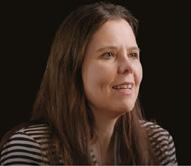

Shared values are what bind a community such as Heriot’s together, part of the distribute chearfullie ethos which visitors to the school sense through interactions with pupils and staff. i

Congratulations to members of Heriot’s pipe bands on their successes this year, and specifically over the weekend of 8/9 June. On Saturday 8, the band performed at the British Pipe Band Championships at Grant Park, Forres. The Juvenile Band placed 4th overall and our Novice Band narrowly missed out on the prize list with 7th overall.
On Sunday 9, Merchiston Castle
School was the venue for the Scottish Schools’ CCF Pipes & Drums Competition. Heriot’s were runners up to overall winners Dollar Academy in the senior band competition. In the solo events, Heriot’s pupils enjoyed great success with first prizes for Rory (S3) (intermediate piping), Jade (S3) (junior drumming) and Ga Yeon (S2) (intermediate drumming). i
Congratulations to Daniel (S1), who won first prize in the 10-14 age category entitled 'My Happy Place' in a national competition run by the charity 'Drug of Art'.
His art was critiqued by 3 artists and remains on display in Bethlem Museum of the Mind exhibition in Beckenham London. i
Congratulations to Rhea (S2) who reached the final of the Edinburgh Competition Festival Concerto Competition.
This is the second time Rhea has reached the final, and she may be the only young musician to reach the final on two different instruments – the piano four years ago and the violin this year. i

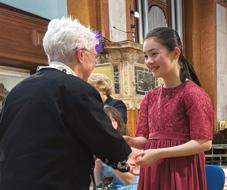
The S6 Ball was an unforgettable night filled with glamour, laughter, and cherished memories! S6 pupils celebrated in style, marking the end of an era.
From the stunning outfits to the heartfelt speeches and joyful dancing, the evening was a true reflection of the spirit and camaraderie of the Class of 2024.
Thank you to everyone who made this night so special. Here's to the future and the incredible journeys ahead!
Remember, you may have moved into the FP bracket, but 'Once a Herioter, always a Herioter'.
Make sure to sign up at the Herioter Hub to stay connected and hear the news from the School! i
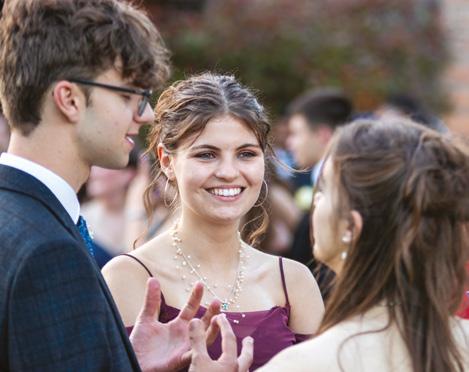
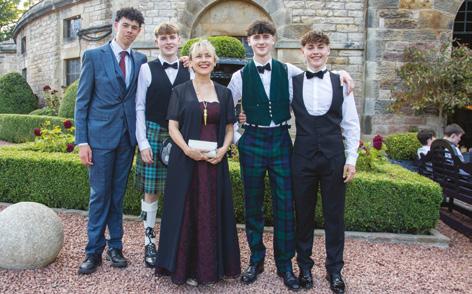

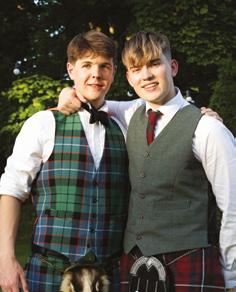
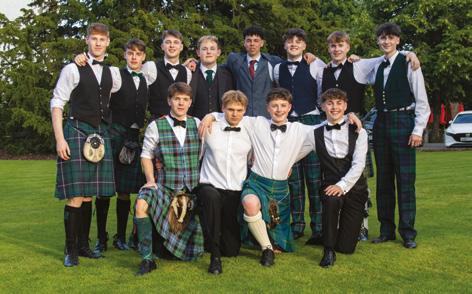
Congratulations to Catherine (S5) who has been shortlisted in the OxBright Essay Competition.
OxBright helps pupils stretch themselves academically, find their purpose and make a difference in the world.
This year's topic is 'Never doubt that a small group of thoughtful, committed citizens can change the world. How does collaboration supports social impact and innovation'. i
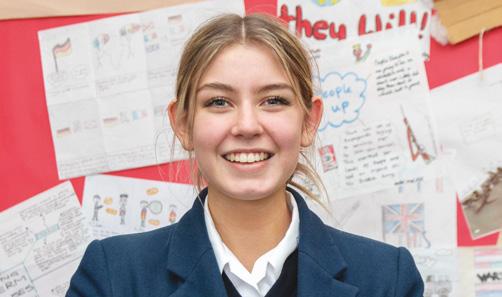
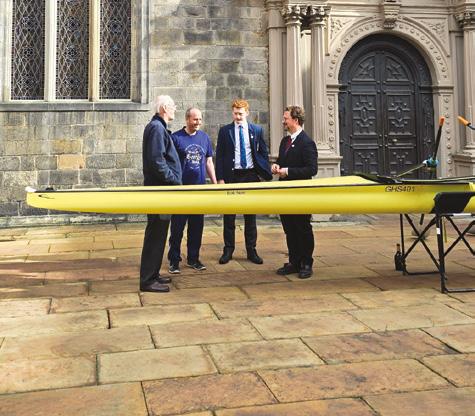
On the evening of the 30 May we welcomed back Ron Neill (brother of Bob), Heriot’s Rowers past and present, and the Heriot's Rowing community to christen the new Coxless Quad, the ‘Bob Neill.’ The group had previously joined one another in October to pay tribute to the late Bob Neill, Master of Rowing and Physics Teacher.
From the 6 October 2023 event, an amazing £64,703 was raised which
has allowed for the purchase of the new Coxless Quad, a set of eight new blades, and the creation of a rowing hardship fund to enable more young people from the School to become involved in Rowing, to develop further what is already an amazing Rowing reputation.
We thank the late Bob Neill for his dedicated service to Heriot’s Physics and Rowing and for building such strong
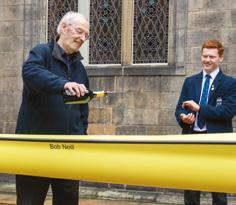
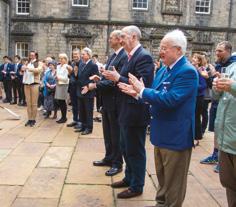
foundations for rowing. We send a heartfelt thank you to all donors, rowers and volunteers who came together to achieve such a phenomenally successful tribute.
Who knows, maybe we can achieve the same success as we begin preparations for our Burns Supper on the 24 January 2025 to launch fundraising for the Heriot’s Pipe Band. i
Congratulations to UK Biology Olympiad Gold medal winner Ben (S6) as he excelled in a tough selection round to reach the final stage of the British Team selection process.
Ben will now undertake further training and selection activities over 4 days at Warwick University in April and, if successful, will represent Great Britain in the International Olympiad held in Kazakhstan in July.
To proceed this far in team selection is an outstanding achievement; we wish him every success in April.
In addition, Ben has gone from a competition with 15,000 participants to the next selection round with 400 Gold medal winners to reach the last 16 in the UK.
An incredible achievement. i
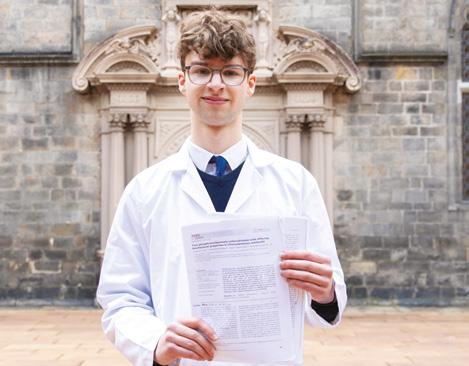
Congratulations to film producer and former pupil Ken Petrie (2004, pictured top) who has released his latest feature film, BLACK DOG, in the UK & Ireland. The film's score was composed by another former pupil Blair Mowat (2004, pictured bottom). Blair and Ken met in Primary 1 and have remained friends ever since.
BLACK DOG can be watched on Amazon & Apple and Sky from September. Having Premiered at London Film Festival where it was nominated for The Sutherland Award for Best Debut Director, BLACK DOG also played Glasgow Film Festival earlier this year.
BLACK DOG stars Jamie Flatters (AVATAR 2), Keenan Munn-Francis (making his feature film debut, recently seen on stage at the Young Vic in Passing Strange), Ruby Stokes (Rocks), Nicholas Pinnock (Django), Paul Kaye (Game of Thrones), Hattie Morahan (Enola
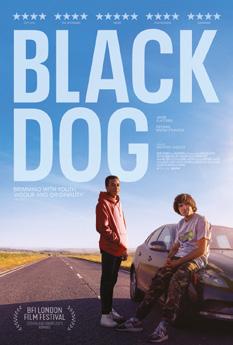
Holmes) and Amrita Acharia (The Serpent Queen). The film was executive produced by Oscar-winner David Parfitt (The Father).
The story follows two teenage boys from very different London backgrounds as they embark on a road trip up North

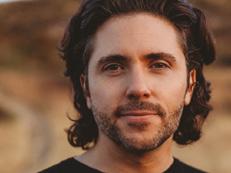
together. As they start to open up about their pasts, the boys learn they have far more in common than they first thought.
To watch the film, visit linktr.ee/ blackdogmovie. NB: BLACK DOG contains strong language and adult themes. i
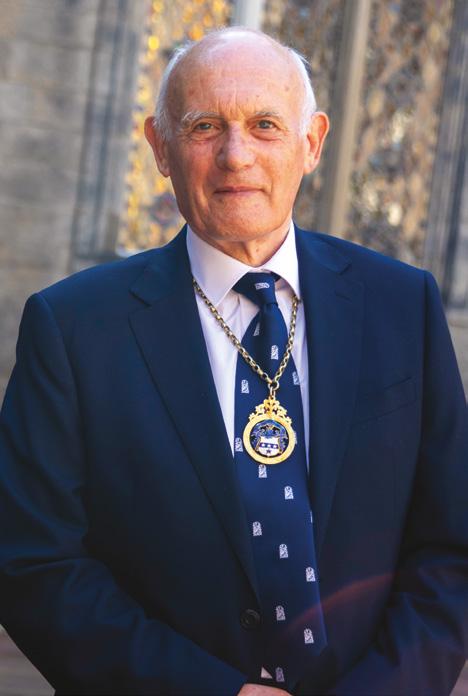
It has been a very particular privilege to have been able to serve the first of my two years as Herioter President in a season which has coincided with the celebration of the 400th anniversary of George Heriot’s legacy – a legacy that demonstrated not only a ‘distributing chearfullie’ generosity but also a deep practical compassion for the disadvantaged, and a vison ahead of its time. As just one of the several thousand ‘Foundationers’ who have benefitted
directly from that generosity, compassion and vision over the intervening four centuries my involvement with School during this past year has rekindled, in a very particular way, my sense of gratitude not just to the institution but specifically, and more personally, to the person whose name it bears.
Having had opportunity, even in a limited way, to engage with Governors, staff and some of the pupils has also enabled me to sense the ethos and
principles that shape the Heriot’s of 2024. In so doing I am confident that Heriot would be pleased that his School not only continues to provide practical financial support to a significant number of pupils disadvantaged by bereavement or other life-circumstances, but actively seeks, across the whole school community, to practice and foster the values that prompted and shaped his original ambition.
As my teachers of many years ago would readily testify, I was never a pupil who showed great interest in history and the ‘classics’ – my bias in my school years was always more towards geography and the sciences. My eye was however recently caught by a brief article regarding the Greek philosopher, Plato. Apparently, Plato wasn’t overly keen on society placing reliance on the role of ever more laws in pursuit of ensuring good order. Instead, in his opinion, the key issue was not to control behaviour later in life but to raise and educate children in such a way that the values of a good, just and fair society are imbued and embedded early, and then reflected across their subsequent journey through adult life to the benefit of all. With that in mind I suspect it’s not just George Heriot who would be pleased with the School that continues to bear his name and embody the spirit of his legacy. As I look forward to my second year as President I do so knowing it will bring fresh opportunities to engage with many of you who, like myself, greatly value the start in life which Heriot's provided, and the friendships which it birthed. The School remains actively committed to fostering these connections, on-line and in person, so can I encourage you to make use of the Herioter Hub, and to keep an eye out for events in which you might participate – and if that provides an opportunity for us to meet, so much the better. i
Morgan Jamieson (1965) Herioter President
Email: FPpresident@george-heriots.com
Who does not look at a group photograph and wonder what has become of the other people in the picture?
So it was recently when I came across the photograph of my first teacher in Memories of Heriot’s, a recently published anthology of various FP recollections –still available from the school.
While I had no specific memory of Miss Murray’s Class B in 1955, my general feeling was one of warmth and contentment. I did recollect that somewhere there was a class photograph. This was duly found and immediately the names returned, seared as they were into our minds, thanks to the daily morning roll call in alphabetical order.
The next thoughts were Where are they now? and What deal did their character, education and fortune provide for them?
The realisation that September 2025 would mark 70 years since we came together made me consider investigating and so the quest began.
Attending the FP coffee mornings resulted in Gordon Watson, Roy Adamson, Colin Moss and myself being
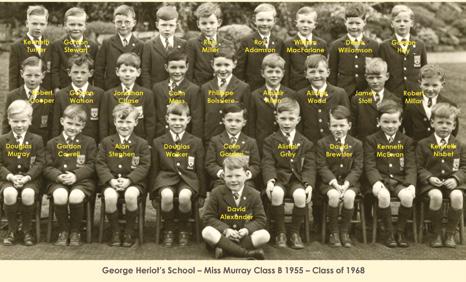
reunited so that leaves only another 24 to find.
The photograph has the pupil names. If you see yourself here, can correct a name or recognise someone whom you knew and can shed light as to their whereabouts or career we would appreciate hearing from you. If anyone also has any specific recollections of Miss Murray these too would be appreciated. We hope to follow up with an article around the last quarter of 2025. i
Philippe Boissiere (1968)
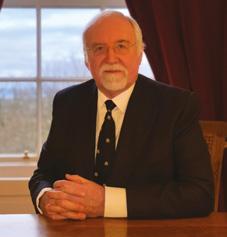
Do you recognise yourself in this image? We’d love to hear from you if you do…

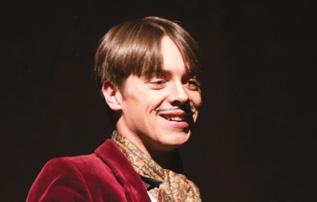
Congratulations to Former Pupil Cormac MacLachlan (2022) who, after a foundation course at Rose Bruford College, has been offered a place to study Acting at The Julliard School in New York.
This is an amazing achievement, and we are delighted that his passion and hard work paid off. i
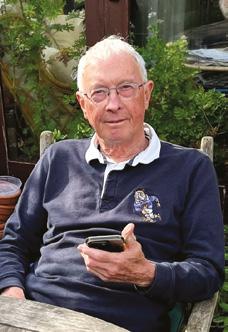
I was awarded a Fellowship of the Royal Photographic Society.
This is their highest level of distinction and only 600 of the 11,000 members worldwide have been honoured with it.
I left school without achieving any O levels on account of my love of photography, so this award means a lot to me. You may still have copies of the images of teachers that I made at the age of fourteen, little imagining that at the age of eighty-one my passion would be so rewarded. i
David Randall left Heriot's in 1963 and, after university in Edinburgh and Princeton, served in church ministry for over fifty years mostly in MacDuff, Aberdeenshire.
Since retiring in 2010 David has authored several books, of which Dealing with Doubt is the latest. It is subtitled 'Help from the experience of Bible characters'.
The book is published by Day One Publications: dayone.co.uk i
This poetry anthology, written in support of the people of Ukraine in their current conflict with Russia, has just been released by Pegasus Publishers. All royalties from the sale of this work will be donated to the charity ‘Hope and Homes for Children’ (Ukraine).
Jim writes: ‘I first joined Heriot’s (P3) in 1959 and left (S6) in 1970 and have many fond memories of my time at the School. When I first joined, my father (Allan McDonald) had been appointed Head of German. He later became Deputy Headmaster and, the year after I left, he was appointed Headmaster.
I studied at Edinburgh University (Ecological Science, then Electrical Engineering) before working as a researcher (Head of Forest Ecophysiology) in Uppsala, Sweden. I then worked as a researcher and teacher
at Aberdeen University (Head of Plant & Soil Science, Director of Teaching Biological Sciences), retiring in 2014. i
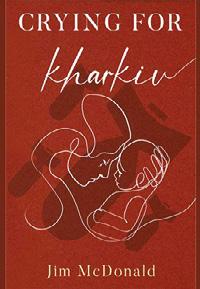
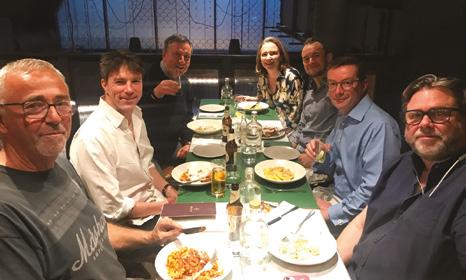
Herioters in London are planning to resurrect a Founders’ Day service at St Martins-in-the Field. Robin Baxter (1969), helped by several London-based Herioters, is in conversation with St Martin’s Head of Ministry Operations and is tentatively looking at organising a small service for Monday 2 or Tuesday 3 June 2025.
The group is keen for Heriot’s
to renew its long association with St Martin's, especially since St Martin’s was the original burial place of George Heriot, where there remains a lamp in his memory, in the sanctuary as a benefactor.
If you would like to be involved, please contact Robin Baxter via email on robin@baxter.io or via the school Development Office. i
Congratulations to Dr Hilary Clydesdale (2014), who completed her PhD at the University of Edinburgh in May. In her PhD thesis, titled Secrecy, Surveillance and Counterintelligence in the Prose Fiction of Walter Scott and Robert Louis Stevenson, Hilary examines how Scott and Stevenson forge a complicated relationship between history, the publication of domestic secrets, and the nineteenth-century historical novel. By analysing the literary and historical functions of gossip and anecdote, Hilary highlights that Secret History enjoys a significant and sustained literary role in Britain from 1814 to 1894. Here is an excerpt from her PhD thesis which features Scott and Heriot:
“After going up ‘a private staircase, –even that private staircase, the privilege of which at court is accounted a nearer road to power than the grandes entrées themselves’, Heriot stoops through ‘a little door half-covered by the tapestry’, and his journey from the public and into the domestic domain of Secret History is complete (349, 66). The novel’s transition into its own version of the Secret History of King James is signalled by the gradual falling away of Heriot’s company as he makes his way through the labyrinth of corridors in secrecy and silence. […] in his private chamber where ‘we are secret, my good auld servant Geordie’, James is presented at leisure and is free to openly discuss his expensive taste for Heriot’s jewels and gold and openly criticise his courtiers’ political manoeuvrings (70). It is in the domain of secret history that the king’s domestic quarters are revealed to be an unofficial extension of the royal court, where friendships and affairs direct the king’s political strategies and conduct.” (Clydesdale, pp.53–54).
In 1822, Walter Scott, also known as ‘the Author of Waverley’ (1771–1832), published one of his best and wittiest historical novels, The Fortunes of Nigel. Appearing as the most likeable and intriguing ally and favourite of King James VI and I in Scott’s novel, the king’s jeweller, George Heriot (1563–
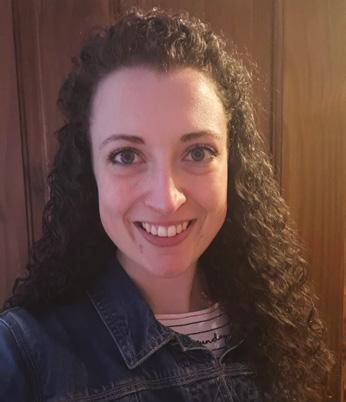
1624), was quickly identified by early nineteenth-century readers and critics as a fascinating historical figure. Scott’s description of Heriot’s character in The Fortunes of Nigel became an indelible part of Heriot’s literary legacy and history in Britain during the nineteenth century. Following the success of The Fortunes of Nigel, the character of George Heriot was successfully adapted for the stage and his popularity as one of Scott’s much-loved historical characters is signalled by the inverted title of the play, George Heriot, or the Fortunes of Nigel, which was performed at the Royal Theatre in Edinburgh in 1823. Walter Scott’s publisher, Archibald Constable, also capitalised on the surge of interest Scott had generated among the reading public for histories of Heriot and he swiftly publishes Memoirs of George Heriot Jeweller to King James VI with an Historical Account of the Hospital founded by him at Edinburgh as a non-fiction accompaniment to The Fortunes of Nigel. Memoirs of George Heriot promises Scott’s readers the opportunity to learn more about Heriot, his private life and manners, and the foundation of his Edinburgh Hospital: it even includes ‘Copies of his Last Will and Testament’ and ‘the original Statutes of the Hospital’
in its Appendix.
Throughout my AHRC-funded PhD, I had the enjoyment of researching how Walter Scott and Robert Louis Stevenson (1850–1894) reflect, and contribute to, a nuanced development of British historicism during the nineteenth century in both their fiction and nonfiction histories. In my thesis, I draw attention to the significant, and previously unrecognised, relationship between the nineteenth-century historical novel and Secret History, a controversial genre of history that publicises the secret activities and scandalous private affairs of powerful public figures, most often monarchs, nobles, and statesmen. Heriot, in The Fortunes of Nigel, is certainly a custodian of secrets, allowing Scott to transform intelligence uncovered by eavesdropping, gossip, rumour, and anecdote into the legitimate materials of public history.
As a former pupil of George Heriot’s School, it was an unexpected delight to be reintroduced to the school’s founder through Scott’s work and to acknowledge the important role that Scott offers to Heriot as part of his ongoing interest in Secret History, its attendant social and political controversies, and its place in the burgeoning literary market of the early nineteenth century. i
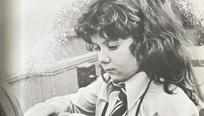
The school has now reached gender parity, but back in 1979 it was a different story. We are hoping to engage with as many of our Former Female Pupils as possible, and we want to know more about what you want from the school. We are especially keen to hear from you if you are from any class between 1979 and 1989. Would you like to join us for a coffee, a drinks reception, or get involved in the current pupil mentor programme? Could you get on board with a female lead series of lectures? We are open to all your ideas, just get in touch with the Development Team at dev@george-heriots.com
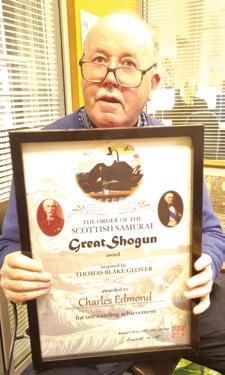
In January 2024, former Foundation pupil Niall Kirkwood (1970) was named the Charles Eliot University Professor at Harvard University, Cambridge, MA, USA. This professorship was established in 1926 by alumni in honour of former Harvard president Charles William Eliot (AB 1853).
Niall's current research and teaching focus on climate adaptation in dense major international cities and in land under threat from flooding and pollution including Bangkok, Thailand, Hangzhou, Beijing and Xian, China and Seoul and Ulsan, South Korea.
In April 2024, Niall was elected to the American Academy of Arts and Sciences.
Founded in 1780, the American Academy of Arts and Sciences honours excellence and convenes leaders from every field of human endeavor to examine new ideas, address issues of importance to the nation and the world, and work together, as expressed in our charter, “to cultivate every art and science which may tend to advance the interest, honor, dignity, and happiness of a free,
Charles Edmond (1968) was awarded a Great Shogun award by the Order of the Scottish Samurai for services rendered to Japan through the Japan Society of Scotland.
Charles was honorary secretary of the Society for several years, having lived in Tokyo for three years and become an Asia specialist in the investment arena for 20 years.
‘’The Order was inspired by Thomas Blake Glover, about whom a book was written called Scottish Samurai. Glover was adviser to the founder of the Mitsubishi group and travelled to Europe in 1870 with the ‘Choshu five’, young Samurai warriors who came for a study visit fully clothed in kimono’s and samurai swords! Through the offices of his employer, Jardine Matheson, Glover took the group to Aberdeen and arranged the purchase of clippers and naval warships. He also arranged the purchase of gun sights. These conferred extra range, which
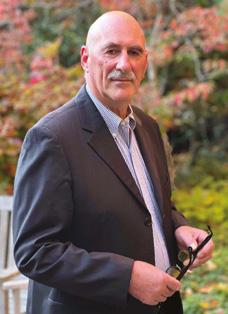
independent, and virtuous people.” Niall joins the company of notable individuals from its earliest members John Adams, Benjamin Franklin, Alexander Hamilton, and George Washington to Ralph Waldo Emerson, Maria Mitchell, Alexander Graham Bell and international members Charles Darwin, Albert Einstein, Mary Leakey and Nelson Mandela. i
allowed the purchased vessels a strategic advantage over the Russian fleet. These sailed the long way round to attack Japan, only to be wiped out in a subsequent naval battle in the Straits of Tsushima. The Russians had been under the impression that the Japanese were a relatively primitive nation, who still fought their battles with muskets, swords and arrows. With Glover’s help, the Tsar received a rude awakening at ‘the Asian Trafalgar’.
‘One of the Choshu Five was a man called Ito Hirobumi. He later became the first Prime Minister of a post-Meiji Japan and remained Glover’s life-long friend’.
Through the Japan Society of Scotland, one of Charles’ recognised services was the delivery of a keynote lecture to the Asia Business and Management Conference in Osaka in 2012: “The Shareholder Spring and changes to ethics in Finance -comparisons in Asia’’.
Thanks to Charles for sharing this. i
Thank you to Former Pupil Tom Kidd (1972) for sharing his story and incredible images of Shetland.
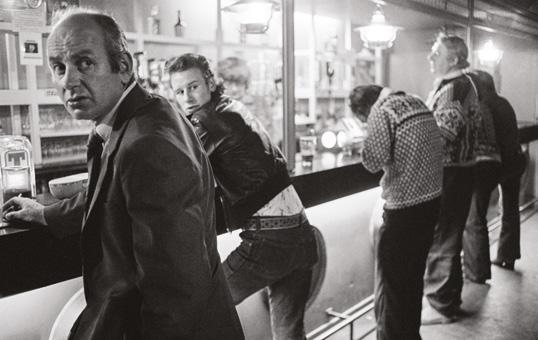
Tom arrived at Heriot's aged 4 in 1958. He was in Miss Redman’s class through Prep school. He still remembers doing the entrance test…fitting wooden shapes into a board, and the class rabbit “Thumper”.
The crush and chaos of “Ma Wallace’s Tuckshop” in The Vennel resulted in Tom being stabbed and taken across the road to The Infirmary for stitches…an accident it transpired, although headmaster Willie Dewar did check with Tom that he wasn’t going to speak to the newspapers about it.
Tom’s passion was photography. He was in the school camera club, as well as Edinburgh Photographic Society. In S6 he was allowed to do photography for Sixth Year Studies art. The school were a huge help in that regard. They re-commissioned the darkroom, suppled
film, paper and chemicals. Art teachers Gus McKinnel and Alan Huxtable were full of encouragement and Tom was allowed to come and go as he pleased during the school day, making frequent trips to the likes of the Grassmarket to take photographs.
On leaving Heriot's, Tom studied Photography at Polytechnic of Central London, then Napier College in Edinburgh. After leaving Napier, he was awarded a Kodak Bursary to photograph the effect North Sea oil was having on Shetland.
He spent time there between 1975 and 1979, renting a cottage, then, when the money ran out, working on a building site and as a furniture delivery driver, staying in B & Bs. Old school pal Donald
Stewart helped Tom find work offshore and continue funding the project. He was fortunate to meet another Herioter, the late Chick Chalmers who had just finished a project photographing Orkney. Chick was having a book Life in Orkney published by Paul Harris, so it was an obvious follow on for Harris to publish Tom’s photos in Life in Shetland. Chick became a great friend and photographic influence.
Another book, Black Gold Tide followed, by which time Tom had been working for a variety of newspapers and, having been flying aircraft and helicopters for many years, was piloting the police helicopter in Glasgow.
Tom now lives in Dunbar and can be contacted at tomkiddphotography.co.uk i
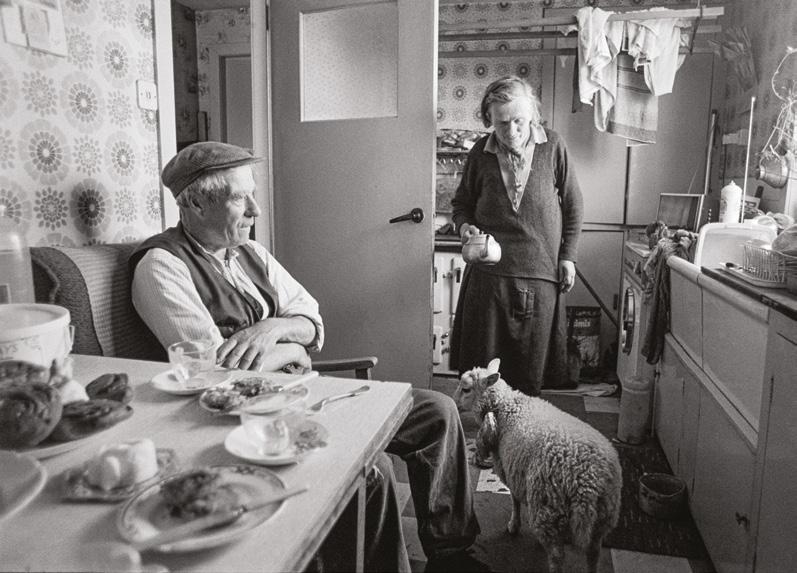

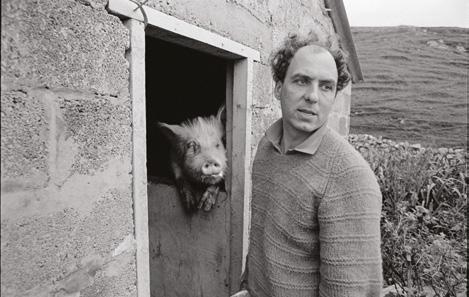
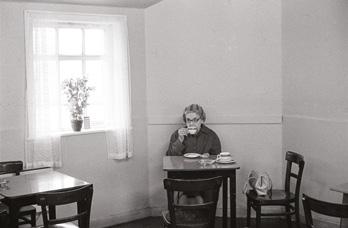
Former pupil and high court judge Sir Brian Langstaff (1966) was appointed chair of the infected blood inquiry on 8 February 2018, and has spent the intervening six years gathering documents and evidence.
On Monday 20 May, Brian delivered his report in the grand Central Hall in Westminster, surrounded by more than 1,000 victims and their families and told them what they have been waiting nearly 50 years to hear: “This disaster was not an accident. People put their faith in doctors and the government to keep them safe –and their trust was betrayed.”
The full report can be read here: www. infectedbloodinquiry.org.uk/reports/inquiryreport
The quietly spoken former judge faced the Hall which many victims stood dressed in red T-shirts bearing slogans such as “infected blood, dying for justice”, and asked them to applaud everyone who contributed to the report and shared their stories.
Langstaff rejected having the inquiry named after him, preferring instead to
There are many golfers who see the sport as one to be played from Early Spring until late Autumn.
We are looking for those who have some knowledge of Curling to join us when the weather is less kind to golfers.
We seek at least 6 new members to help revive the club and avoid its closure. Former Pupil Bruce Mouat holds the World Championship as Skip of the Team and it would be wonderful to boost the club to honour his success.
The Club is open to members of the whole Heriot Community including the parents (male and female) of pupils who are or were educated at Heriot's. Teaching staff are also eligible for membership.
A warm welcome awaits you as we
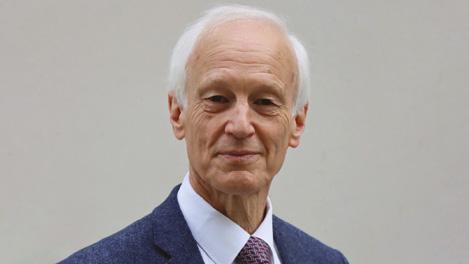
keep the focus on the victims.
As a QC, Brian specialised in clinical negligence, and has served as the chair and president of the Personal Injuries Bar Association.
Born in 1948, he was educated at George Heriot’s school, Edinburgh, and the University of Cambridge. He was called to the bar in 1971 and appointed Queen’s counsel in 1994.
Victims and families have praised him for his compassion, and for his willingness to hold those in power to account for their role in the scandal.
Langstaff has been working full-time
on the inquiry since 2018, retiring from his role in the high court, to which he was appointed in 2005. There he had served as president of the employment appeal tribunal between 2012 and 2018.
It’s not the first health-related public inquiry Langstaff has been involved in. He worked on the Bristol Royal Infirmary inquiry, set up in 1998 to investigate the deaths of 29 babies while undergoing heart surgery in the late 1980s and early 1990s.
Brian will visit Edinburgh on Wednesday 4 June 2025 to give a lecture on the Inquiry. i
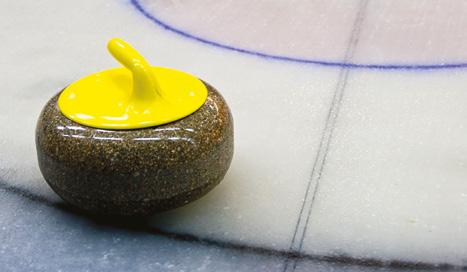
participate in the Former Pupil League against Watsonians, Stewarts Melville and Edinburgh Academy.
We also compete in the Half Century Competition played on a Friday afternoon, and the King George IV Trophy.
We also have a game against the current pupils who elect Curling as their winter sport option.
Please help us in our quest to continue: Please contact Douglas Goddard for information via dougie.anne@btinternet.com i
We are delighted to share the news of Former Pupil, Andrew Anderson (1986), who has been awarded an OBE in the King's New Year Honours 2024 list for services to cancer support in the UK and abroad.
Wonderful news, and recognition after 24 years at Maggie's Edinburgh where he continues to do his good work. Andrew had previously worked as an Oncology Nurse in the Western General Hospital before working with the team at the Maggie's Centre.
When we spoke with Andrew, he expressed that the OBE is recognition for the whole team at Maggie's in Edinburgh, the UK and Internationally.
We are sure you will join us in congratulating Andrew. i
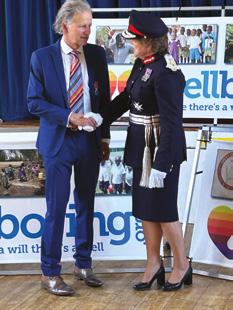
Nigel Linacre (1974) has been awarded the British Empire Medal for water provision in Kenya and other countries with his Charity WellBoring. Nigel has led the charity since co-founding it in 2011, and it has now got safe water to over 250,000 people in rural Africa. The charity relies on voluntary donations.
The goal is to get safe water to a million people via 1,000 school borewells,


increasing school attendance and reducing sickness and worse from waterborne diseases. The Medal was presented by the Lord Lieutenant of Wiltshire in a private ceremony.
Nigel commented “I distribute cheerfully is forever etched into my mind; I am thrilled to be playing a part in getting safe water to so many.” i
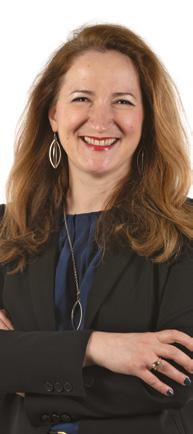
His Majesty, The King has approved the appointment of the University of Aberdeen’s first female Regius Chair of Physiology. Congratulations to Professor Mirela Delibegovic (1995) a Former Pupil of Heriot’s who currently heads up the Aberdeen Cardiovascular and Diabetes Centre exploring insulin resistance and how diabetes, heart disease, ageing and Alzheimer’s are woven together.
Mirela joined the school in 1994 for her Highers from a wartorn Bosnia and Herzegovina and has made Scotland her home.
Regarding her appointment, Mirela said, ‘It doesn't get better than this. It is a huge honour and until I saw it in writing I still didn't believe it.’ i
Former Pupil Jane Flynn (2009) writes about her time with the Mennonites of Southern Illinois. Jane is a photographer who is deeply interested in documenting those in contemporary American society who may not typically be considered as underrepresented but are not wellor fairly - represented within art and media today. She writes below of her latest project and her thoughts on the community.
I have always been deeply fascinated by American culture; the extremes of its politics and those that inhabit one of the most powerful nations on earth have always seemed interesting to me. After finishing my Bachelor's degree at Duncan of Jordanstone in Dundee, I was offered a place on a Master of Fine Arts course at Southern Illinois University Carbondale with a teaching assistantship, which was truly a dream come true. During my second of three years of my MFA, I met the Mennonite Church in Anna, Il, I was warmly welcomed into the service, and later the community, with true Christian kindness. Despite appearing and dressing differently from those that I sat amongst, I was regularly invited for meals within their homes after the services and developed many friendships during these visits.
Escaping persecution from the Catholic Church in Europe, the Mennonites arrived in America on October 6, 1683, settling in what is now recognized as Pennsylvania. Since their arrival, they have spread out to along all 50 states within America, living also
Bruce Mouat (2012) vand his Scottish squad secured the Co-op Canadian Open men’s championship with a 6-5 victory over Calgary’s Team Brendan Bottcher. It is the sixth Grand Slam of Curling title for Mouat.
Mouat also completed a career
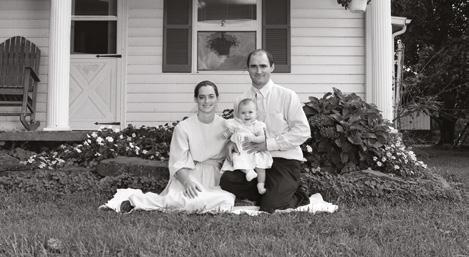
in Canada and South America. Named after their founder, Menno Simons, the Mennonites are Anabaptists who live a bible-taught way of life, as evidenced in every area of living: speech, dress, business, social purity, recreation, education and non – participation in politics and warfare. They believe in the separation of church and state, nonconformity to the world, discipleship and being born again by practising adult baptism.
Mennonite homes appear very neat, tidy and are decorated in traditional fashions, instead of iconography, which is forbidden, much of their decorations feature bible verses. Without television, their homes are often filled with the noises of large families and friends visiting: all children, regardless of their abilities, are considered gifts from the Lord. Having as many as ten children is quite normal within conservative communities.
The book documents many personal experiences of my time amongst the Mennonites, such as when I was gifted a
Grand Slam as the Canadian Open was the last of the four majors in the series left to check off on the list. He joins an exclusive club that includes Kevin Martin, Wayne Middaugh, Glenn Howard, Jeff Stoughton and Brad Gushue.
“This one’s pretty special,” Mouat said. “It’s the first time we’ve won the Canadian Open. We’ve not had a great run every time we come to the Canadian Open, so it’s nice to win this
handmade cape dress by my friend Ruby Weaver, which was made in exchange for a family photograph. Ruby, her husband Titus and daughter Erica are shown above, in front of their home. The cape dress, worn by all female church members, is names after the extra layer of fabric sewn into the shoulders and at the waist, adding an additional layer of modesty.
Mennonites practice very traditional gender roles, as taught by the Bible. In church, the men and boys sit on the right, and woman and their infants to the left. Men are considered the head of the church and home, where they are expected to lead worship and be the final decision – maker for any significant changes. As such, much of my socializing was spent with other women and their infants. Therefore, my book should not be considered a documentation of all things Mennonite, but rather a glimpse into a largely misunderstood and misrepresented community within the modern-day media and American society, from a female orientated perspective. i
one and that checks off the four major ones that we started with.”
“It’s a pretty cool club to be a part of,” he added. “Some amazing athletes out there, some guys that I watched growing up and inspired me to take part in curling. I was glad that I was able to get into that club as well.”
Thank you to Douglas Goddard for passing on this news and to the Grand Slam of Curling website for content. i
We have been delighted to discover there are 129 Herioters based in the United States of America.
The US group were emailed at the end of 2023 to ask if they would like to share contact details with one another and a list is currently being populated with email address and closest towns to aid connections being set up.
A small team of US Herioters is helping the US Herioters group get off the ground, including Bob Dewer (1980), Niall Kirkwood (1970), Justin Sharon (1987), Alf Merriweather (1972), Bill Gardner (1974) and Finn Murphy (2014). We are very grateful to them for their guidance and support.
With Bob’s help, an arrangement has been put in place to enable donations to the school from American-based tax payers via British Schools and Universities Foundation (BSUF), a non profit, tax exempt organisation. This enables donors to qualify for US tax deductions, as BSUF is a charitable organisation approved by the US Internal Revenue Service under section 501(c)(3).
In April 2025, it is hoped the School will be visiting New York with the School’s 30-strong Pipe Band, who will be playing at the Tartan Parade on Saturday 5 April, as part of Tartan Week. The School will host a Drinks Party in New York on Friday 4 April to which all US Herioters are invited. We hope you will be able to join us.
Should you have any questions about the US Group, please contact the Development team. i
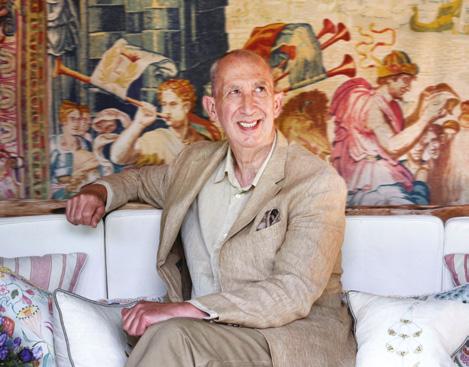
James Thomson OBE (1976) owner of The Witchery and Prestonfield House, has been awarded Master Innholder status.
Thomson is one of Scotland’s bestknown independent restaurateurs and hoteliers, with a distinctively luxurious portfolio. He is among 10 industryleading professionals who have received the Master Innholder award from the Worshipful Company of Innholders this year, in recognition of their outstanding contribution to hospitality.
James is a significant figure in the Scottish hospitality sector, an inspiration within the industry. He opened The Witchery aged 20 and has since successfully designed and managed some of Edinburgh’s most beloved restaurants, building a worldwide reputation for great Scottish food, wine and service.
Appointed Deputy Lieutenant of Edinburgh in 2018, James has been credited with helping regenerate Edinburgh’s Old Town into a vibrant tourist destination and in 2005, was awarded an OBE for his services to Scottish Hospitality and Tourism.
As a member of the Prince’s Trust Scottish Advisory Board, James created the annual ‘Lunch with an Old Bag’ event in aid of the charity, which has raised
over £7 million since its launch in 2009, helping to change the lives of over 7000 young people in Scotland.
He is a Founding Patron of Springboard UK which helps disadvantaged and unemployed people of all ages and backgrounds to pursue a career in hospitality, gaining the skills, knowledge and experience needed to flourish in this sector.
James is opening the Witchery Shop in September, which will be brimming with a collection of rare, beautiful and thoughtful objects curated by James working with some of the most inspired and talented designers, artists and producers in Scotland and beyond .
A book is to be published by James in Spring 2024 about Prestonfield House, The Witchery and Edinburgh. It will reflect on how James’ school days at Heriot’s and his love of history, art and drama inspired him to open The Witchery (at the age of 20) and later to purchase and restore Prestonfield House, where he had originally worked as a student. Proceeds from James’ book will go to the Prince's Trust to help young people in Scotland from disadvantaged communities and those facing the greatest adversity by supporting them to build confidence and skills to live, learn and earn. i
Part one in a series of articles by Doug Bathgate (1974).
Pay attention school! What you are about to read may be classified. Disclosure to outside parties – especially Watsonians etc – may be considered Treason.
Underwater Remotely Operated Vehicles (ROVs) were released from the secret military domain in the early 1980s. The booming North Sea Oil and Gas Industry embraced the technology immediately. Over the next forty years, UK based firms innovated and engineered the initial vehicles beyond the wildest dreams of the military inventors.
Power increased from a measly ten horsepower – sea-horses of course –to around one hundred and fifty. The standard camera fit could be up to six – colour not black and white, and with hugely improved resolution. All other instruments and tools advanced annually. This caused many issues when data transmission to the surface reached the limits of copper wire. Luckily along came fibre-optics and much like the little glass wires transformed international telecommunications, they enabled virtually limitless data collection and transmission.
Early ROVs were designed to be launched through the torpedo tubes of submarines – a Top Secret factlet! They were the size of basket balls (ish). By the mid early nineties, some, the workingmost ROVs – called Work Class vehicles – were around two to three tonnes. The launch systems up-sized; the mother ships improved, with holes through the centre of the hull to launch the ROVs; Dynamic Positioning became common place.(The vessels were able to maintain

an accurate stationary or moving position relative to the vehicles to help with –say – moving steadily along a pipeline, to inspect it. These vessels were almost exclusively Norwegian.
The whole thing was an intellectual, technical, mechanical, electrical, electronic, hydraulic; Rush; Thrill; Boost; whatever you think to call it.
Aberdeen was the world centre of expertise. Scots the tradesmen of choice. I was lucky I caught the boat.
But let’s step back a few years to Heriot’s. I sat the entrance exam in ‘66. Then my Dad died. One evening shortly after, I remember playing footie in the street – no cars then – and seeing a darkly attired, tall, gent crossing the end of the street. Gibby Galloway. He was visiting my Mum to inform her I was to
be offered a Foundationers place at the school. Well, that just set her to crying some more.
Mr. Connel educated and entertained in equal amounts that first P7 year. One thing I didn’t like was playing sport with a weird shaped ball! And chucking it to each other not kicking it. I remember the food and the dinner hall – now the staff room! Then the new refectory after a few years. I’ve now eaten in the ‘new new’ refectory and I’m looking for a badge of some kind. We didn’t have school shortbread back in ‘66. If you can get your hands on some of the 2024 vintage, it’s fabulous!
After Heriot’s came Edinburgh University. Then a year as a Land Surveyor – Saudi Arabia. Then a postgrad in surveying. Aberdeen and the
oil industry, was going gang busters. I tried my hand in the hydrographic survey glove. It was a good fit. I moved a few oil rigs, precisely positioned vessels towing equipment underwater and had an introduction to ROVs via ‘Spot the Dog.’ It was the size of a small chest of drawers, had a chassis made from dexion shelving and was broken more times than not. Great fun. Then came the behemoth ROV made with the chassis of a tank. A shooting tank; think Sherman or Chieftain. It pulled a plough that cut a trench into the seabed into which pipelines were laid.
Then back to smaller vehicles, in Aberdeen to complete my apprenticeship – although there were no formal ROV qualifications at that time. My survey experience gave me a berth on their No1 vessel; the ROV being used to scout the routes for the many pipelines being constructed at the time. When we found WW2 mines we called in the Navy to blow them up (nowadays we do it ourselves). Jobs followed all over the Planet. Norway (they were in the habit of borrowing Brits when they ran out of their own guys – still are); Brunei (hot, very hot); a cable burial job between New Zealand and Australia (Octopus at 1100metres laying eggs on the cable !); Saudi Arabia (hot and sea full of leopard rays; Nigeria (kidnapped by local pirates looking for Christmas presents); Mediterranean (secret work for the RAF during the Croatia conflict); Gulf War 1 (vessel impounded by military en-route Red Sea crossing job ‘’You cannot take that into a war zone gents’’); Canada (develop a 4000metre deep system to dive for SAA flight 295 black box recovery – near Mauritius. Job stolen by US military); Southern Spain (eight-some reel with an octopus!). This requires an explanation.
The ROV was filming a newly-laid pipeline near Huelva in Spain. Before the job was finished the local fishers had over laid the pipe with long-line octopus fishing gear. This gear comprised kilometres of ropes with tulip necked vases/urns tied on every 50 metres or so. The ROV became tangled in one of the ropes and had to be brought to deck to be freed. As it came over the vessel side,

one of the pots was clattering against a very expensive camera. One of the lads grabbed the pot to stop it swinging. He held on to the pot as we lowered the ROV to the deck. The vehicle settled onto its bed of old car tyres and there was an almighty shriek from the man holding the pot. A baby octopus, maybe feeling the heat from his hand, or maybe just being curious, had exited the pot and was now crawling up his arm. The heeby jeebies ensued. ‘Ah… Ahh… get it aff me… It’s got ma specs now… Ah ma neck…’’
The ROV recovery – to deck – was our primary concern and once we had achieved this we gathered to help Ian. ‘’C’mon… get it aff me.’’ One of us had to hold him down to stop the squealing and squirming, the other grabbed the Ollie. Well actually, Ollie didn’t want to let Ian go… or his specs. A sailor from the ship rushed in to help. OK. Ollie still had a hold of Ian with arms three and seven. Another sailor arrived brandishing a wicked looking knife: ’I keel et, I keel it. No problem…’’ Since the wee things head was only the size of an apple and it was attached to Ian’s arm, stabbing it was potentially dangerous. Anyway there were four of us now. We tried to get an arm each, but they were slippy. Ollie was happy to hold onto what he wanted but not to have us hold him. We retrieved the specks; Ian was blind without them and found ourselves with an octopus arm each. It writhed and squirmed, released an arm grabbed an overall cuff, a wrist,
whatever it could. Someone nearby was alternately humming ‘Scotland the Brave,’ and laughing uproariously. ‘Look, on the count of three, we’ll shrug him off and drop him to deck… “Well we couldn’t do it ‘cos we were now ending ourselves also. I spluttered ‘’One.. two…’’ choked, tried again until eventually Ollie splatted the deck. He lay there like a discarded wet mop head. ‘’I keel heem now… I take cookhouse…’’
‘’No. No. He’s not gonna die. He’s put up a great fight and we’ve had a great laugh.’’
‘’So how we gonna getta him back in the oggin…. You gonna pick ‘im up ?’’
Another sailor strolled on deck with a long handled brush. ‘’I brush heem over thee side. No problem.’’
Yup; Ollie had other ideas. He liked the brush, so the brush and Ollie went over the side together to end the incident. If that had been in the last ten years there would, of course, be ‘phone video I could give you access to, but alas it was the ‘80s. No camera phones. But I’ll remember it forever.
Only a few months before our 50 Years celebration. I’ve spent 43 of those years with ROVs. There are many more stories to share when we get together.
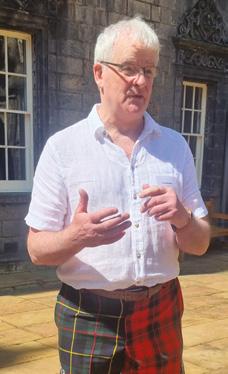
Doug’s second article will appear in the next issue of Quadrangle. i
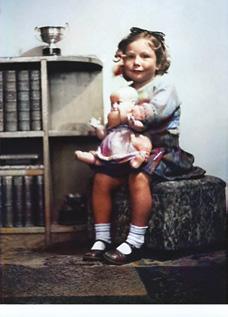
In January of this year, the Development Team had the pleasure of discovering the story of the first three sisters in the same family to have received Heriot’s Trust grants for education. This is the story of the Barron Sisters and the incredible lives they went on to lead.
In 1950’s Edinburgh, the young Barron family was struck by terrible bereavement. James Barron, a clerk for building company, Wimpey, suddenly and unexpectedly passed away from a heart attack aged just 48. He left behind his wife and three young daughters: Helen (14), Rhona (11) and Margaret (9).
A period of uncertainty followed as the family tried to adjust to life without their father. Their mother, Helen, was able to find work part time as a dinner
lady at a local school, but financially it was difficult for the young mother to support her family. Mrs Barron’s grandson, Andrew explains: “Financially I am sure it would have been hard. Just two days before his death he had signed an agreement to buy a flat in Bruntsfield in Edinburgh, but of course those plans had to be abandoned. The family stayed at the small rented flat in Colinton Mains, and the three girls shared one room.”
A passionate believer in the importance of education, Mrs Barron attended an interview with Mr Carswell, the then Headmaster of Boroughmuir. The two eldest sisters, Helen and Rhona, were both pupils at Boroughmuir, but with the loss of their father’s income, it was unlikely their education there could continue.
It was at this meeting that the girls’ mother, Mrs Barron, was made aware of the existence of George Heriot’s Trust grants. Mr Carswell explained to her that George Heriot’s Trust gave Foundationer Bursaries to pupils who lived in Edinburgh whose father had died. He explained that the available funds went first to any boys in the form of a fully funded place at George Heriot’s School. Any available funds were then offered to girls in the city, to award a grant for their education.
Shortly after this initial meeting, a representative visited the Barron family home; a rented flat on the Gumley Estate. He explained that the Trust had never awarded Foundation Bursaries to three girls in the same family before, and
that this was to be the first time. The girls learned they had been successful in winning bursary places.
In late August of 1955, Mrs Barron took her daughters to purchase all the supplies necessary for the girls schooling. Helen, the eldest daughter, described how the money was enough to “kit us out completely! Shoes, Burberries, blazers, gym kits, hockey sticks and boots, geometry sets, jotters and text books. Ample funds for our needs.” For a mother of three young children, who had lost her husband, knowing that her daughters’ educational needs were taken care of was a huge comfort.
The older two girls, Helen and Rhona, who attended Boroughmuir, continued their education there, whilst the youngest sister, Margaret, finished her primary education at Craiglockhart and then followed in her sisters’ footsteps to Boroughmuir.
All three sisters proudly continued their education after leaving school, with the benefit of continued Heriot’s grants to support this.
Helen, the eldest of the sisters, continued her education through Edinburgh University Reid School of Music, followed by a qualification at Moray House Teacher Training College. Helen went on to teach music at several schools across Scotland including Annan Academy in Dumfriesshire and Woodmill Junior High in Rosyth. Helen married David Carfrae, with whom she had a coincidental connection. David had also benefitted from the generosity
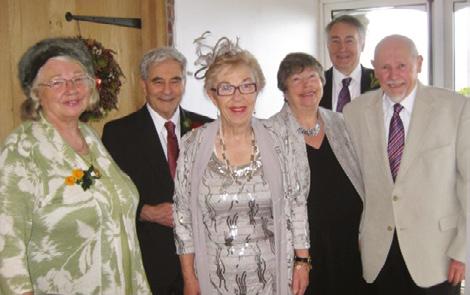
of George Heriot and had received a bursary to attend Heriot’s, leaving in 1957. The couple had two sons; David and James. David Sr. went on to become a Consultant Histopathologist at Stirling Royal, and the two remained very happily married until David’s death two years ago aged 83. Helen says of her support in education “All my life, I knew if my husband was to die (as my father did when I was 14 years old) I knew I had the means of earning a decent living. Thank you George Heriot.”
Rhona, the middle daughter, followed her sister’s passion for education and attended Moray House Teacher Training College. The Heriot’s connection continued throughout Rhona’s life as she met and fell in love with Herioter Michael Gruneberg (1959). She later went on to become a specialist remedial teacher in Swansea. Rhona’s husband Michael explained: “Rhona began a career as a teacher in Swansea, eventually teaching secondary children with learning difficulties. She loved her job, and her pupils loved her.” Rhona and Michael had two sons, Phillip and Leon. They remained very happily married until Rhona’s passing in 2023. Her Heriot’s grant was a source of great pride throughout her life and something for which she continued to be grateful. When Rhona sadly passed away, Michael made sure to mention her pride in her Heriot’s grant in her eulogy.
Margaret, the youngest sister, was to follow in the sisters’ footsteps, with the benefit of a continuing Heriot’s grant to support her further education. After graduating with a Masters degree in Psychology from Edinburgh University and obtaining her Teacher Training from Moray House, she moved to the West of Edinburgh. She worked as a school teacher in West Lothian for a year. Then she started a career as an Educational Psychologist for Lothian Region. It was her job to make sure that children and young adults with special needs were properly assessed and provided with the most appropriate support throughout their education. She went on to marry
her beloved husband Peter and the couple had two sons; Graham and Andrew. Margaret sadly passed away in 2021. Her son Andrew spoke to the Development team about the impact the Heriot’s grant had on his mother’s life: “Despite being brought up by a single mother from a relatively humble background, my Mum was able to achieve the level of education and career that gave her real enjoyment out of life. I have no doubt that the help her family received from George Heriot's generosity to the "faitherless bairns" of Edinburgh played a huge part in this. I'm sure her life would have been so different if she had left school early like both of her parents or had not been given the same freedom of choice in her degree and career.”
The Heriot’s connection ran strongly throughout all the sisters’ lives and was a source of incredible pride. With the sisters pursuing successful careers in education thanks to continued Heriot’s Trust funding. And with two out of three of them marrying Herioters, they were never far removed from the legacy of the great man himself. In the closing words of Helen: “WELL DONE JINGLIN’ GEORDIE”.
Eldest sister Helen, Rhona’s husband Michael and Margaret’s son Andrew helpfully provided the information for this article. The Development Team would like to thank them, and the Wright, Carfrae and Gruneberg families, for their support in writing this article. i
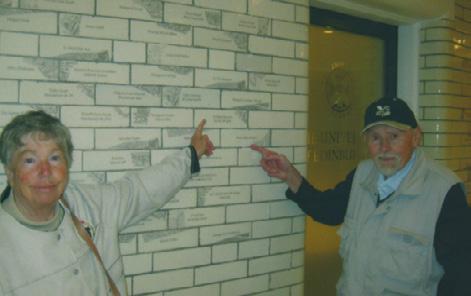
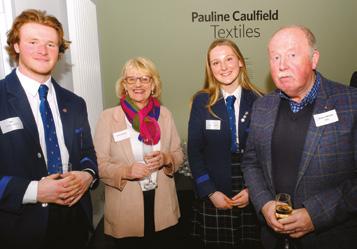
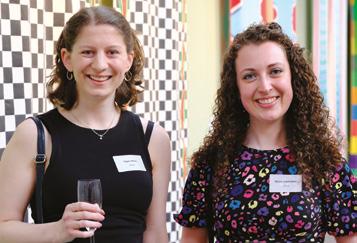
A very enjoyable evening was had by all who attended the Former Pupils Drinks Party at Dovecot Studios on Thursday 18 April. A heartfelt thank you to all who joined us on the night.
Former Pupils from 1947 to 2019 connected, reconnected, and spoke about the thread that unites them: their time at Heriot's.
A delightful speech was given by the


Captains, Amy, and Esme, who spoke fondly and eloquently of their time at the school and their exciting plans for the future, as they head off to university. I am sure wise words were received as they chatted to fellow Herioters. All four Captains helped to host and as always shone a light on the positive attitude held by all Herioters.
The current Herioter President,
Morgan Jamieson (1965) said a few words of welcome and asks that anyone who would like to reach out to him to do so, he would be more than happy to connect, please email Morgan via FPpresident@ george-heriots.com.
See Dates for the Diary on pages 2–3 and join Former Pupils events in Edinburgh, London and in regional events across the country. i
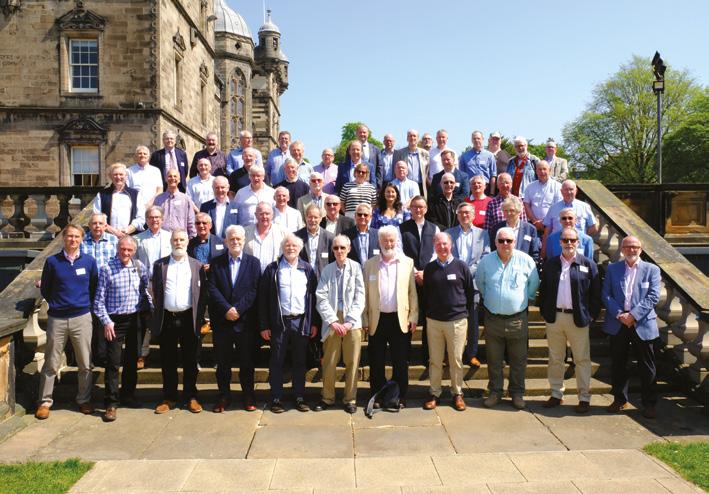
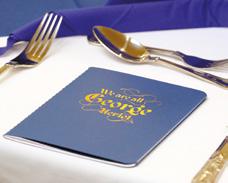
The After Many Years event on Saturday 18 May for the classes of 1974-1984 delivered a glorious day of warmth and sunshine. Over 70 former pupils visited for a day of re-connecting, remembering and re-igniting friendships.
Hector MacQueen (1974), Former pupil and former Governor of Heriot’s (1987 –1998), gave a heartfelt speech about Heriot’s motto of distributing cheerfullie, explaining how it had informed his life
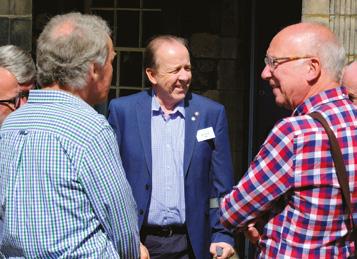
and many others over the years. Mr Morrison, Head of Junior School, spoke of the recent success of the School in the Education Scotland inspection, while Captain Tom spoke on behalf of the current pupils.
Thank you to all those who joined us. These pictures give a flavour of the fun had. Keep a keen eye out for next years After Many Years date for the classes of 1985–1995. i

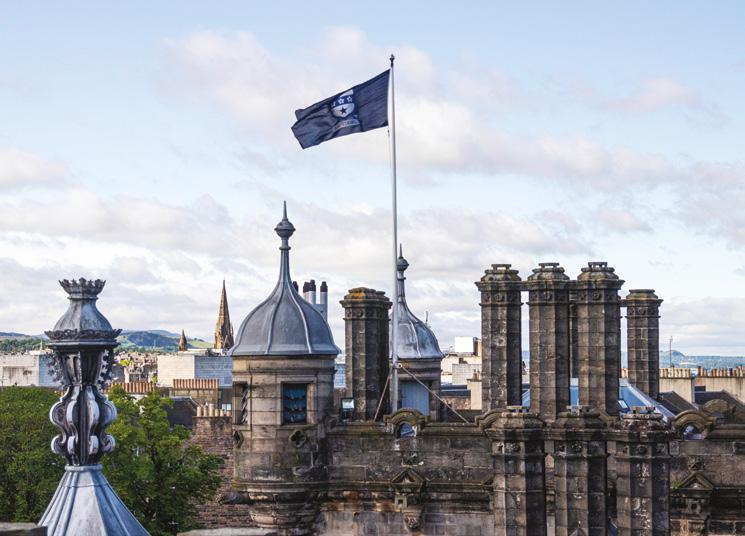

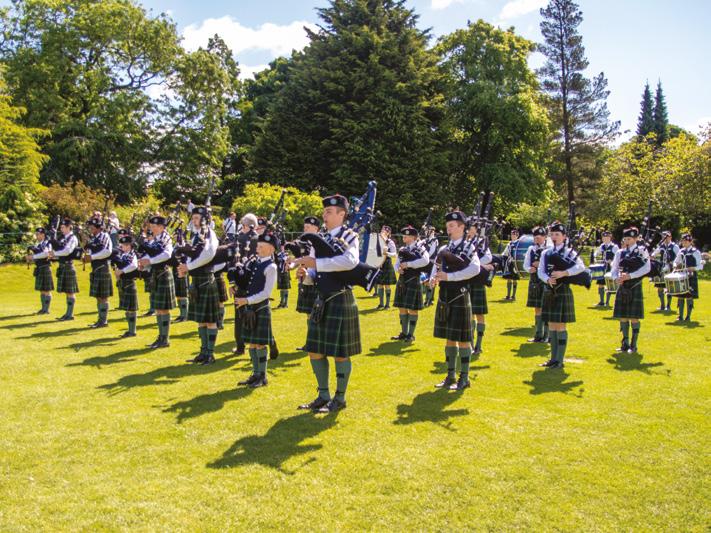

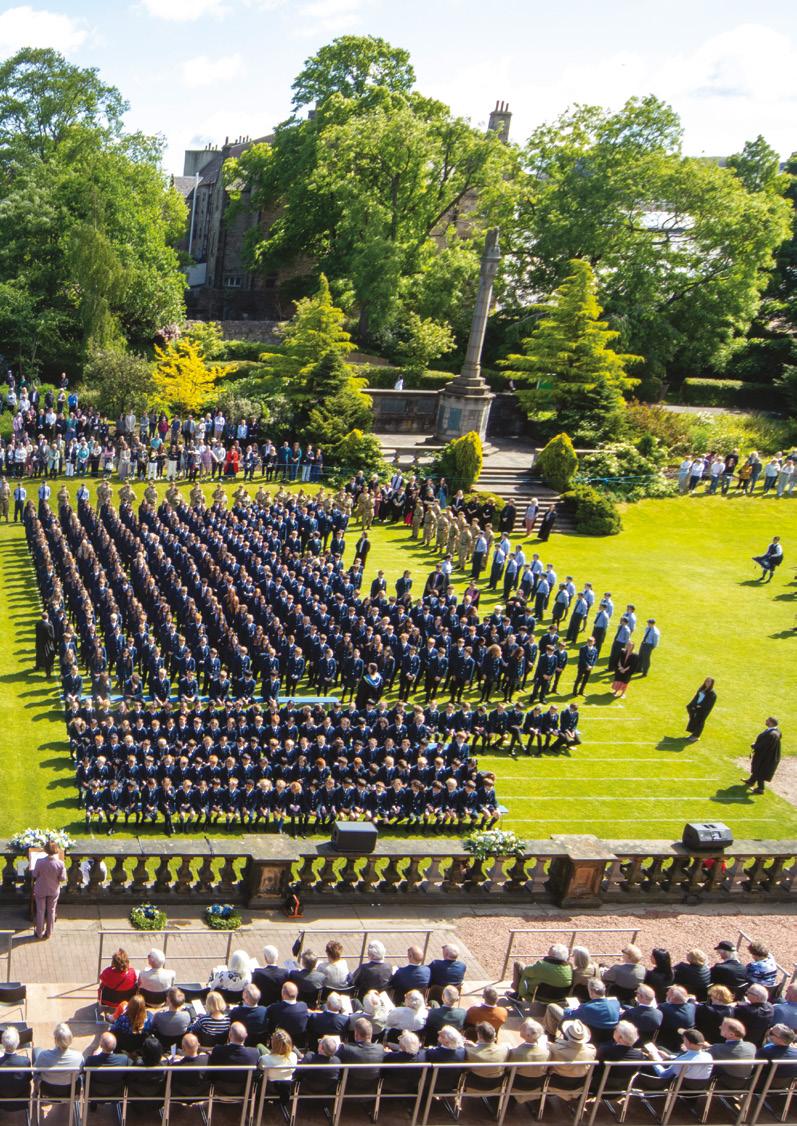
Ken Simpson, former Head of English at George Heriot’s School, on the Founder's legacy.
Can I say first that I am an English teacher, not a historian, and that my fundamental interest is in the narrative, and in the values communicated by that narrative? Apologies then for any factual inaccuracies in what is to come!
That said, thanks for the incredible privilege of being able to share my sense of Heriot’s story and his legacy on this auspicious occasion.
Eleven days before the end of his short life in 1553, King Edward VI signed the Charter which marked the formal foundation of Christ’s Hospital in London.
Whatever one makes of the dissolution of the monasteries from the 1530s onwards, there is no question but that it had had a detrimental effect on what passed then for social welfare. Conditions in London had deteriorated, and so, inspired by a sermon from the
Bishop at the time (Nicholas Ridley), Edward set up five ‘hospitals’, and one of these, Christ’s, had the particular job of providing care and education – in terms familiar enough to us – for poor, fatherless children. It is particularly poignant that such generous provision for London children should have been made by a king who was himself no more than a child.
By the time Heriot became aware of Christ’s Hospital, it had been running for several decades, and, from the start, catered for hundreds of children. Jean Findlay fictionalises a conversation Heriot might have had towards the end of his life with his friend, Walter Balcanquall, who subsequently became such a powerful figure in the execution of Heriot’s wishes:
‘Aye man,’ he [Heriot] is breathless, ‘all my treisur will go fae the benefit o’ bairns. I saw Christ’s Hospital where the puir boys are brought up and schoolit so they enter
“Whatever one makes of the dissolution of the monasteries from the 1530s onwards, there is no question but that it had had a detrimental effect on what passed then for social welfare.”
university like ony rich man’s son. I will build that in my ane country.’
‘You have mair siller than the King himself, wha is in your debt.’
‘And we are all in debt to our ane country and that, Balcanquall, is not this England. You will build my hospital in Edinburgh.’ …
‘I shall see to it, my freend, it’ll hae the King’s blessing and maun be like the castle, a castle tae learning in all its splendour.’
‘Splendour is no the main thing, Balcanquall. Though splendid it will be: Inigo Jones will design it like yin o’ his palaces. But whit is important is the character o’ the staff. The man at the gate. How the laundry maid behaves is mair essential. The boys, the orphans, faitherless bairns, will read a psalm afore meals, then say grace, then gie thanks tae God efter the meal. Every meal, forivver. This may be my wasted, tired auld body – but that building will be my soul.’
[Findlay, The Queen’s Lender, pp. 191-2]
We are all familiar with the next part of the story.
George Heriot’s intention to emulate Christ’s Hospital is absolutely clear – though not, curiously, in its admission of girls. Interestingly, the Hospital itself is now a prestigious independent school in West Sussex, and claims to have an astonishing number of students (around two thirds) on full or partial fee remission – proportions, I fear, of which we can only dream!
One aspect of Christ’s Hospital which Heriot (or at least the early

governors) chose not to adopt – perhaps thankfully – was its extraordinary Tudorstyle uniform, worn to this day, of a long blue cassock and yellow stockings. Apparently, the best matching footwear is Dr Martens’ boots…
The first half of the 17th century was a turbulent period, and it is to the credit of Balcanquall and his colleagues that they persevered with the consolidation of Heriot’s financial legacy and the construction of the building, Civil War notwithstanding. Many of us are familiar with stories of how the near-complete ‘wark’ was used by Oliver Cromwell –long before any orphans got near it – to billet his troops during the occupation of Edinburgh in 1650, and how, showing a
Puritan’s scant regard for sacred space, he even stabled his horses in the chapel!
It is no small achievement, then, that a total of 43 boys was finally admitted to the first session of the school in 1659.
In surveying the history of that period and beyond – and many thanks to Lockhart’s Jinglin’ Geordie’s Legacy – it becomes clear just how seriously the Governors took their responsibility to act on the founder’s intentions. Some readers will recall Hector McQueen’s article about this in Quadrangle 2023, where he suggests that Heriot may have been the first person to create a Trust under Scots Law: the concept of Trust had hitherto been unknown in Scotland, though it was well-established in England. Heriot took great care to ensure that his wishes would be carried out by the ‘trustees’, and there
are huge numbers of checks built into the documentation.
The Governors’ desire to remain faithful to Heriot’s intentions manifests itself in all sorts of ways – not least in difficult discussions over the centuries about whether the bairns had to be both poor and fatherless, what provision should be made for girls, what social class(es) the hospital should primarily be targeting, and what sort of education should be provided – broadly ‘technical’ or ‘classical’ (and there was much agonising, on that front, about whether the boys should be taught Greek…) But whilst the educational debates of yesteryear were rather different(!), the central commitment to provide for poor, fatherless children stayed invariably at the heart of these debates.
Perhaps the most spectacular manifestation of that commitment was the emergence of the ‘out’ or ‘outdoor’ schools from 1836, intended to cater for a much larger number of children than could possibly be accommodated in the Wark. (Hence the term, ‘outdoor’, which does not indicate some proto-Steiner system, or an early commitment to the Duke of Edinburgh’s Award Scheme!) This was in the period significantly before compulsory state education, and when, thanks to increasing urbanisation, the traditional parish system was no longer able to cope. So, the outdoor schools were extraordinarily far-sighted for their time. We can get a sense of what they looked like at the old Cowgate Port School on a corner on the way up to the Pleasance (the way the architecture imitates the
Edinburgh’s school-age population. An HMI inspection took place in the early years, and a report appeared in 1842-3. In the gloriously pompous language of the period, we are told:
“ ‘The superintendence of these Schools is of the most complete and stringent kind. They are frequently visited by those interested in the elevation and amelioration of the conditions of the poorer classes. Strangers are attracted towards them by the accounts which they hear of the immense good they are accomplishing, and the wonderful change which they promise to effect upon our poor population. Everyone projecting the institution of Schools for the poor, in Edinburgh, and the surrounding country, looks to them as the best models.’ ”
[Lockhart, pp.117-8]
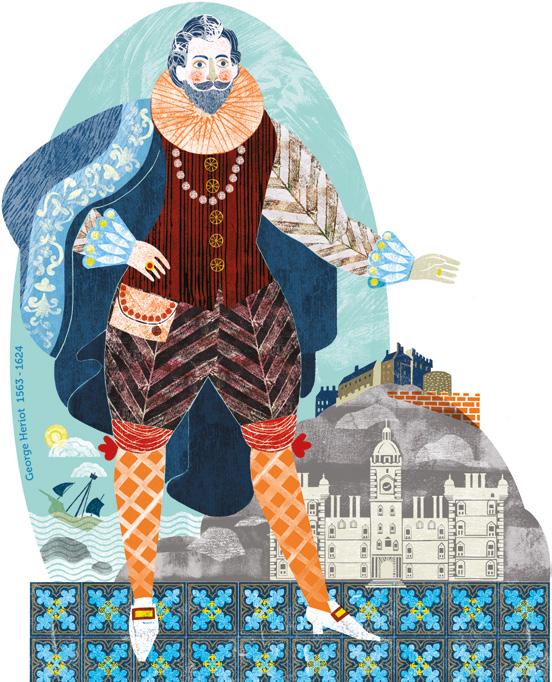
Crucially, throughout the period of these schools, there was a progressive emphasis on social mixing amongst the pupils, and a removal of the religious test for teachers (allowing the appointment of non-Church of Scotland staff). Teachers’ salaries, moreover, were somewhat higher than elsewhere in order to attract the best possible people – a practice which continues at Heriot’s, broadly speaking, to
These outdoor schools, so committed to spreading the benefits of Heriot’s legacy, played an important role in inspiring the 1872 Education (Scotland) Act which brought in universal education and, perhaps ironically, meant ultimately that they were no longer required. The Governors put up a huge fight to save them, but the battle was lost, and they ceased to exist, at the same point as the ‘hospital’ became a school in 1885.
Heriot Watt
One very positive development from that difficult period, however, was the Governors’ decision to offer significant financial support to the Watt Institution, as they were so impressed by its commitment to practical and progressive education for people from all walks of life, which they saw as entirely compatible with the principles of Heriot’s legacy. Thus,
Heriot-Watt College came formally into being, also in 1885.
We can only hope that the Governors were similarly impressed by the Watt’s commitment to the education of women: following a campaign led by Mary Burton, women students had been admitted in 1869, some twenty years before legislation forced all Scottish universities to do the same.
Moving into the 20th and 21st centuries, it is the care extended towards refugees fleeing various conflicts in Europe and the Middle East which becomes one of the most striking features of the school’s commitment to its Founder’s legacy: right into our own time, Heriot’s offers free accommodation for the education of displaced Ukrainian children on Saturdays.
Many of us will be familiar with stories of the Serbian boys – 27 in all – who joined the school in 1916: the warmth of the welcome they received, the teacher who taught himself Serbian so he could talk to them, and the love of rugby which they so quickly developed! We are perhaps less aware of the extremely grim circumstances which brought them to Edinburgh in the first place: following the defeat of Serbia in 1915, AustroHungarian forces occupied the country, and internment camps were established; the Serbian authorities encouraged boys and young men to avoid the camps by escaping the country altogether, but were totally incapable of offering practical support to that end. Thousands of boys died of starvation, cold, and disease in the mountains between Serbia and the Adriatic, and it is absolutely remarkable that one small group made it to Edinburgh at all. It is no surprise, then, that they were so profoundly grateful to Heriot’s for everything the school did for them, and – as many will know – the last surviving one, Dimitrije Dulkanovic, insisted on being buried in 1995 in his old school tie. The descendants of the Serbian boys still mark Founder’s Day, and, this year, they gathered for a celebratory lunch on Sunday, 2nd June.
Less well known is the story of Mirela Delibegovic, a Bosnian Muslim:
having sat exams close to artillery fire in Tuzla during the war in former Yugoslavia in the early 1990s, she was granted a free place as a refugee at Heriot’s to do her Highers. She has since gone on to develop a hugely successful career in pharmacology, and now runs a major centre researching insulin at Aberdeen. She, too, has an immense love of the school, which she expressed warmly in a recent talk she gave to our Syrian refugees (see also p17).
At the height of the crisis in Syria, indeed, about ten years ago, Governors made the decision to offer free places to a small number of refugees from that wartorn country. It was my personal privilege – if, admittedly, a professional challenge! –to be the English teacher of one of them. Dwelling on that Syrian pupil for just a moment, it was striking just how hard he worked, and how he was ultimately able to achieve a National 5 English qualification in 2022 – one of the proudest exam results of my career. Just as important as his commitment, though, was the response of the pupils he worked with: one in particular, day in and day out for three years, offered him unstinting support, advice and care – helping him, step by step, to build the language skills that enabled him to succeed. It was all very practical and unsentimental, but, my goodness, it was humbling and beautiful to behold. There, I suggest, was the spirit of Heriot’s bequest absolutely enshrined in the daily reality of school life.
A final, whimsical, point – and back to the reign of King Edward! I wonder how many readers have noticed that Christ’s Hospital was first built, in central London, on the site of an old Greyfriars monastery? And our own building, of course, was constructed next to the old Greyfriars site in Edinburgh. It’s a curious coincidence. The ‘grey friars’ were, of course, medieval Franciscans, dedicated to the service of the poor and least privileged members of society… and I wonder, sometimes, if there are just the faintest echoes of their ethos (which would have been quite familiar to the people who established the schools) in the spirit of selfless generosity we have all inherited?
That Franciscan spirit also lives on in St Catherine’s Convent, across the road, which does terrific work with Edinburgh’s homeless. Many Herioters have done voluntary service there over the years, and I have had the opportunity to visit some of them on placement. Sister Aelred –in charge of the convent – has spoken warmly to me about what she calls the distinct ‘charism’ of Heriot’s pupils: that word ‘charism’ is connected with ‘charisma’ or ‘spirit’, but also has rich connotations connected with giving. What Sister Aelred sees in our pupils was what I saw in the support given to the Syrian pupil in my classroom. And it’s what any number of Edinburgh people who have spoken to me over the years – bus drivers, taxi drivers, publicans, the old lady next to me at church – have meant when they’ve said to me, ‘Ah, Heriot’s… well, Heriot’s is different, Heriot’s is special.’
I’d conclude, then, by suggesting that we are referring to that charism, that spirit of generosity, when we say, ‘We are all George Heriot.’
Kenneth Simpson (Principal Teacher of English, 2003-2022) spoke at the Governors’ Dinner, 6 June 2024, on this important, complex and fascinating subject. This is a transcript of his speech. i

Acknowledgements:
Jinglin’ Geordie’s Legacy, Brian R W Lockhart, (East Linton, 2003).
The Queen’s Lender, Jean Findlay, (Edinburgh, 2021).
Quadrangle, Issue 43, Autumn 2023. christs-hospital.org.uk Gemma Hay, PT Citizenship, and Russell Gray, Careers/English.
March
Filming takes place featuring former bursary pupils Phil Nurse (2003), Caroline Hunter (1987), Charles Edmond (1968) and Fabia Ahmed (2019) speaking about the impact of a Heriot’s bursary award on their lives. The filming session includes one very wet and windy morning session recording the Principal’s ‘call to action’. The film can still be viewed at george-heriot2024.com
Friday 22 March sees Combined Cadet Force members come together for the Big Quiz of the Year, raising an impressive £400.20 for the campaign.
We receive one very generous donation from a former bursary pupil which makes a great dent in our fundraising target.
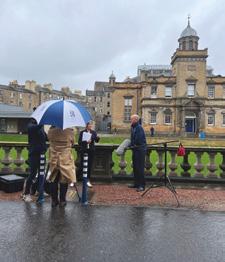
Campaign total at 12/3/24
£10,400.20
Grow a Goatee like George Launch
Darren Donaldson, our Development Manager, led the style standard on a Grow the best Goatee competition which ran from 1 April to 24 June 2024. Darren was joined by Head of Junior School, Paul Fairclough and Former Pupil Dave
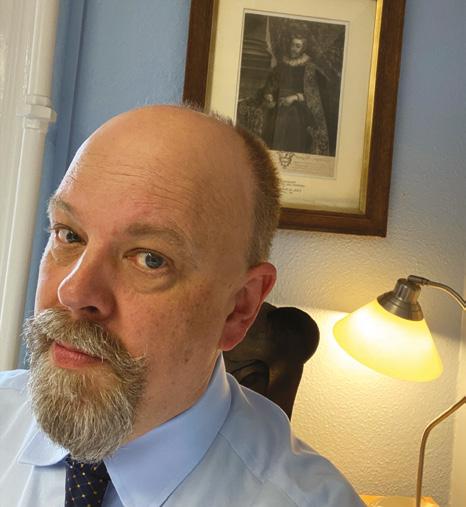
Goodwin. The winner could be no one else but Mr Fairclough, I am sure you all agree he wore it well!
April
We are All George Heriot (WAAGH) website has launched and the Heritage Tours of the school have seen 96 visitors come into school over five days of the Easter holidays to view the Quadrangle, Chapel, Council Room and Staff room. Visitors have included Tour Guides, Archivists, Former Pupils, Parents, Grand-parents and visiting school children from Denmark. Instagram influencer, Ian G Black shared his visit with 1.3 million followers, providing an end of week boost to visitor numbers. Tour leaders Darren, Ailsa, Julie


and Miranda were joined for two days by former Treasurer Fraser Simm, who provided much appreciated ballast!
The Tours have been incredibly well received and will hopefully form part of the blueprint of how the school generates income going forward. August saw four more days of Heritage Tours.
Our first match funder steps forward to incentivise people to donate to the May 400-mile bike ride to London. We are over the moon!
Campaign total at 12/4/24
£18,530.20
18 April sees the official launch of the WAAGH campaign to former pupils and friends at Edinburgh’s Dovecot Studios. A terrific mix of pupils from 1947 to 2019 attend, proving that you can put Herioters of any age in a room and they will find common ground!
Campaign total at 23/4/24
£21,557.62
May 15 May. Junior School Concert
Guests enjoyed an evening of musical entertainment from right across the Junior School. From Disney tunes to The Pipes and Drums, the Junior School pupils wowed the crowd. Raised £342.

16 May. The Big Bike Ride to London
The haar shrouds school as six intrepid cyclists assemble for their trip out to Gladsmuir for the start of their 400-mile Big Ride to London. Bags of power drinks, various states of readiness, nerves and good team spirit prevail. At Gladsmuir church, pipers Sandy Ferguson (S4) and Lorne McIntyre (S1) pipe the riders out on the start of their marathon quest, today ending in Hexham after likely 12 hours of cycling.
A significant donation has been made from a very kind former pupil, raising the campaign total by £10,000.
Campaign total at 16/5/24
£35,942.62

Day One Thursday 16 May
8 hours 3 mins cycling; 11 hours 46 mins duration. Total raised so far £5,752.
Day Two Friday 17 May – words by Alan McClellan
‘Another great day in the saddle, although I’ll not lie, my rear and the saddle are starting to quibble.
After we got through the fog the scenery was amazing. Roy unfortunately broke his rear chain mech on a particularly nasty climb. So ‘Support Norrie’ was summoned and sent to pick up the part from the bike shop so that Roy could make the repair at the side of the road. In true Top Gear style, Team B (Penny, Guy, Gareth and myself) left Roy and Gordon at the side of the road and cracked on.
Big day tomorrow of 118 miles but with hardly any hills or at least that’s what I’ve told the Boss Man’
Running total update £5,971, which is absolutely fantastic.
Day 3 Saturday 18 May
118.1 miles covered; 8 hours 13 mins cycling; 11 hours 9 mins total time.
‘Great day in the saddle, couldn’t be doing it with a better group (*probably). They weren’t too happy when my route involved us cycling along the A1 for about 9 minutes!! But they’ll get over it.
Tomorrow we cycle to London for
the end of our Charity Cycle and I have to be honest, I don’t want it to end but looking forward to meeting my wife in London. ‘
97.4 miles to cycle tomorrow. Current total £6,177
Day 4 Sunday 19 May
‘It has been amazing, the team smashed it and got each other through all our peaks and troughs as a group. 98.3 miles covered; 7 hours 32 mins cycling; 10 hours 16 mins duration
Met by several people at Trafalgar Square including Caroline Evans (1988) (nee Easton). Also joined by Gareth's sister, my wife and Gordon's mate Gavin. So nice to see people that we knew waving us into Trafalgar Square.’
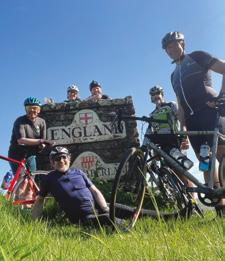
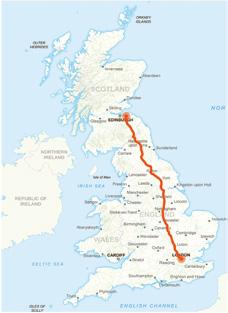

Big Ride 400: in the words of cyclist Alan McLellan, Estates Works Manager:
The challenge
Day 1: 103 miles, 6,475 ft climbing
Day 2: 98.8 miles, 6,025 ft climbing
Day 3: 119 miles, 2,200 ft climbing
Day 4: 97.4 miles, 3,100 ft climbing
Total: 418.2 miles, 17,800 ft climbing
The team
Penny Clark – JS Nursery Nurse - Our very own Duracell Bunney
Roy Munro – Digital Media Technician/ Dreaded Photographer - Pedals in his sleep
Guy Hills – Director of PE & Sportdoes fitness for a living
Gordon Robertson – Rugby & Cross Country coach – does fitness for a living
Gareth Warren – Principal - I wanted him to do it on a Rickshaw like Comic Relief, Matt Baker style but sadly no Alan McClellan – Estates Works Manager – I cycle 3 miles to work every day, so I can do this, I think (must remove stabilisers)
Norrie Duncan – Janitor – support driver and Director of Logistics – sat in the minibus eating doughnuts like something out of a New York police movie.

28 May
The S5 Ceilidh Club came together to raise funds for the We are all George Heriot campaign, having a wonderful time in the process, not only did they have sore feet, but they raised over £300.
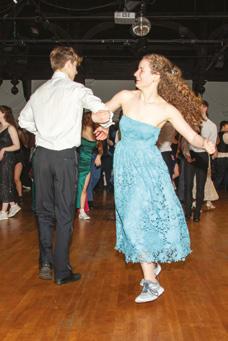
29 May
A fun date for the diary as Junior School had their first ‘House Colours Day’ as a parade of pupils arrived in the colours representing their houses, Raeburn, Castle, Lauriston and Greyfriars! Raising £580 in the process.
It’s been great to see so many staff and pupils involved over May and June, supporting the We are all George Heriot campaign. We’ve had several sporting activities take part of the campaign starting with or ROW 400K challenge which took place on Thursday 30 May. The ROW400KM challenge saw staff and pupils row 400KM in a matter of hours on the Ergo row machines, including those who had never rowed before. Those taking part absolutely smashed the 400km challenge, rowing an impressive 444,497km, more than 10% of over the set target and raising a fantastic amount of £1,500 towards the We are all George Heriot campaign.

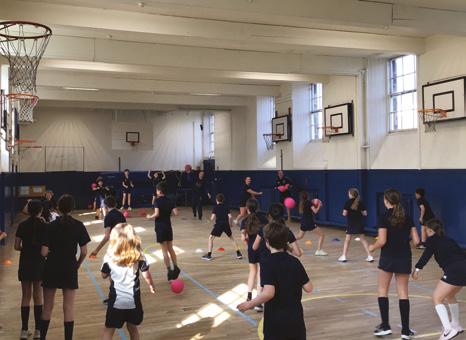
31 May. Contenders Ready
Following the success of the ROW400, there was no stopping the PE Department, other members of staff and the pupils on Friday 31 May in Contenders Ready. Pupils took on Staff in this ambitious day of sporting challenges and activities including table tennis and basketball. A lot of noise was made on the day in support of the campaign but, in the end, Staff crossed the finish line first after a fun filled day of sporting activities.
1 June. June Suttie (Pennykidd) (1996)
June and her family travelled to the Stockholm Marathon to take up this epic challenge on behalf of the campaign. After a few years away from the track, June felt it was a great excuse to start pounding the pavements again.
“The marathon went well albeit it was exceedingly hot at 27 degrees! Unfortunately, quite a few people took ill during the race and having seen a girl being stretchered off at the 8km mark, I decided early on to stop at every fluid station to properly hydrate in a bid to get
round the course safely. I came in at 5hr 15 which was way off what I’d hoped for, but I was frankly glad to have got round in one piece!!!”
Thank you so much to June for all the effort, what a great achievement and what a sum to raise: an incredible £2,750.00!
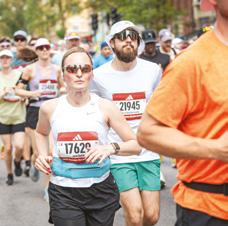
4 June. Bruce Mouat – Curling Comp
Bruce very kindly joined the Development Team and Current Pupils for a small but very fun afternoon of Curling in the old School Gym. Meeting Bruce was a highlight of the pupils' year as he talked about the Olympics, medals and gave top tips for the best moves on the ice. It was wonderful to witness just how inspirational Bruce was for the current team. A huge thanks for his time and generous sharing of skills.
Sheer joy, excitement and energy took over the grounds of the school on the morning of the 5 June, and for 24 hours there was an electric mood as literally hundreds of people ran the 800-metre lap of the school grounds. Jonny Muir had set himself up by Castle with a covered wagon full of snacks, bananas and water, extra layers, a laptop and a great playlist.
As he nervously anticipated the unknown, he was soon joined by Head of Junior School Mr Morrison and the breakfast club who started getting some laps under their belts. The sun broke through, and the atmosphere fizzled as the school body arrived for the school day. From there, history was made for the school as for the next 24 hours pupils, teachers, parents, former pupils and support staff attempted and achieved the goal of running 400 laps of the school in celebration of 400 years of George Heriot’s Legacy.
For the first 12 hours each class, including Nursery, Junior School and Senior School took on their lap challenges, teachers from Philosophy to Sports from Maths to English and History and every department between joined to take their turn, the Music Department were accompanied with a Double Bass, while the Science Department brought a Club Tropicana mood to the festivities.
As the day progressed, we welcomed parents, guardians and grandparents, and extended family to do their bit for this epic challenge, families ran together, while some walked it on their own, a personal goal.
As a thankfully, warm summer evening descended Jonny welcomed his cross-country friends and colleagues to see him through the small hours, many of whom completed enough laps to warrant a half if not full marathon.
As the sun rose on the 6 June, Jonny hungry, tired but ready to finish this event with the joy that is began with was here to wave the next group of runners onto the playground, many with sore legs from the day before. But like all great Herioters they started to pound those last laps.
By late midday, Jonny led an elated and often tearful crowd in the hundreds

as they all completed the final lap of what was a historic event, and as the last few runners crossed the finish line of lap 400, the heavens opened to cool the feet of all the weary.
This event alone raised £6,207, but more than this, it brought the whole Herioter community together, no matter the age or the capability, everyone was able to get involved. 24 hours to be remembered.
On the other side of the world, we had Dr Andrew McGonigle (1991) former Cross Country Captain take to the streets of Sydney to complete a dozen virtual laps ‘round the school’ to add to the Run 400 pot!
A huge thank you to Andrew for dedicating this run to the We are all George Heriot campaign.
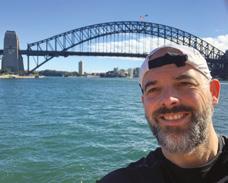
As part of S3 Business Management, pupils were tasked to create and design a new flavour of Stoats Oats bar, to be produced and sold in school.
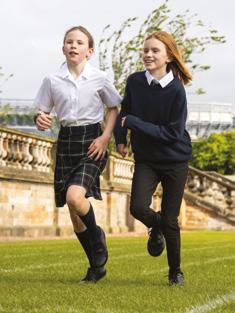
The final flavour is summer berries, which consists of a classic oat base and is packed full of raisins, freeze dried strawberries, blueberries and topped with a white chocolate drizzle, perfect for the upcoming summer season and sunny weather. Working together with the Stoats company was an incredible experience for the pupils and they can't wait to hear what everyone thinks of their creation and raise funds for the campaign. A sell out project with over £500 raised!
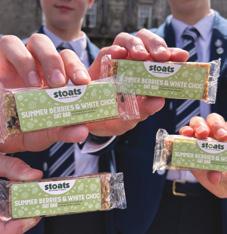
On the evening of the 5 June while former pupils, teachers and parents continued with the herculean Run400 effort, we welcomed 50 guests from across Edinburgh to a very informative, fascinating lecture by friend of Heriot’s, George Dalgliesh. George is a ‘Member of The Incorporation of Goldsmiths and has enjoyed an extensive career as a
museum curator, with a lifelong passion for Scottish history and material culture. A graduate of Edinburgh University, he retired as Keeper of the Scottish History and Archaeology Department of National Museums Scotland in 2016.
George introduced those in attendance to rarely heard tales of George Heriot and illustrated the type of work George the goldsmith would have produced while painting a picture of both 17th Century, Edinburgh and London, revealing little bons mots along the way.
If you missed this wonderful lecture, we would refer you to Issue 43 of Quadrangle, pp. 26-31, and George’s essay, ‘founder and Founder,’ for a taste of his eloquent appreciation of George Heriot, the man, the jeweller, and the philanthropist.
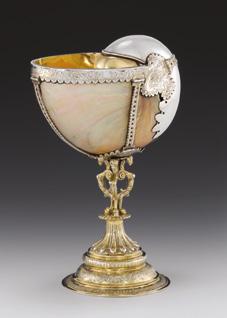
The 7 June saw the launch of the limited-edition George Heriot's Trail, a specially commissioned map showcasing the connections between architecture, history and well-known landmarks, to George Heriot. If you would like to buy your own map, Please visit the School shop.
Campaign total at 10/6/24
£64,545.56

12 & 13 June. Celebration of George Heriot: A Dramatic Life
The Drama department welcomed Herioters from across the board, Former Pupils, current parents, pupils and teachers alike enjoyed an evening of fun, laughter and some tears as the drama department performed a wonderful play, especially written for the 400-year anniversary of the publication of George Heriot’s Will and the beginning of the Philanthropic legacy.
We were entertained by no less than three ‘Georges’; young, young adult and middle aged as they retold his life story with humour and wit. Joined by a cast of Edinburgh’s finest, hardworking residents, the odd ne’er do well, James VI and Queen Anne of Denmark and a quick cameo by one Mr. William Shakespeare fact and fiction interplayed to heighten the drama. A great couple of nights and an amazing £1000 was raised for the We are all George Heriot campaign.
Campaign total at 13/6/24
£70,513.26
17 June. 40 miles bike ride to Gladsmuir
Former Pupil Kyle Thomas (2020), with Scottish Champion Alex Ball and a motley crew, including Penny Clark, Gareth Warren, and a group of current parents started their journey from Edinburgh to Gladsmuir, the birthplace
of our Founder, George Heriot for a 40km cycle from Lauriston Place through to East Lothian and back to the School in aid of the campaign.
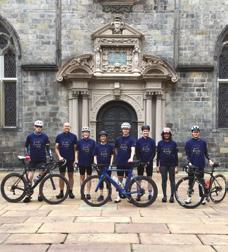
Huge congratulations to Alexander (P5) and his sister, Eloise (P3) who took on the mammoth challenge of climbing Ben Nevis on Saturday 22 June in support of the campaign.
Alexander and Eloise were not discouraged when their original climb date was cancelled due to adverse weather conditions and were excited to take on the challenge of climbing 4,413ft to the summit of Ben Nevis with their parents.
It was a long day for the family starting at 7.30am and although visibility was poor and gloves were freezing to hands, through sheer grit and determination they reached the summit by 17:00.
After setting themselves a fundraising target of £2000 for this climbing challenge, we are delighted to announce that Alexander and Eloise raised a remarkable £4095 towards the We are all George Heriot campaign.

The Junior and Senior Pipe Band delighted the crowds alongside the Pupil Highland Dancers with a 40-minute recital. The sun shone as did the talent of all the pupils involved as we were treated to family favourites and a few more contemporary pieces from the band, all to a great swell of applause.
Well done to all the involved, not only did they put on a wonderful show, but they raised nearly £1000 for the campaign.
7 July. George at Gullane Golf Club
David Goodwin (1985) bravely took on the challenge of playing a round of Golf at Gullane Links with his clubmates on the 7 July, getting a birdie on the first in full regalia! David and his teammates raised a fantastic £210 for the We are all George Heriot campaign. What a great way to get involved, and we are grateful to Dave for all his involvement. i
The final campaign event will be the Big Gala Dinner on Friday 11 October
See next page…
Come to the We Are All George Heriot big Gala Dinner in October
Friday 11 October 2024, from 6:30pm
Prestonfield House, Edinburgh

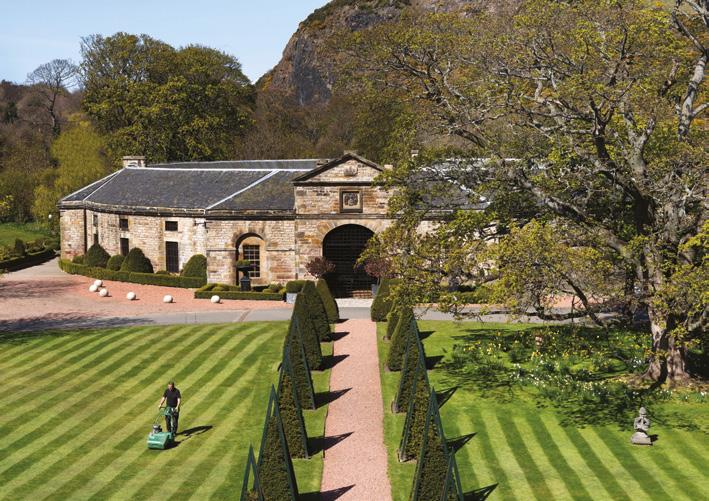
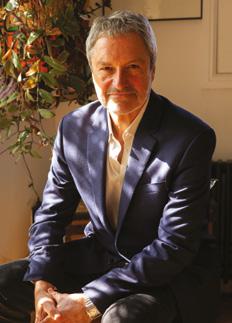
Join us for an evening of celebration for the closing event of the We Are All George Heriot campaign.
Heriot's will be hosting an evening spectacular open to all in the Heriot's community. Whether it's the first time you've connected with the School since your days as a Pupil or Parent, or you're in regular contact, we welcome you to celebrate this historic anniversary with us.
All profits from ticket sales will go directly to the We Are All George Heriot campaign for bursary funding.
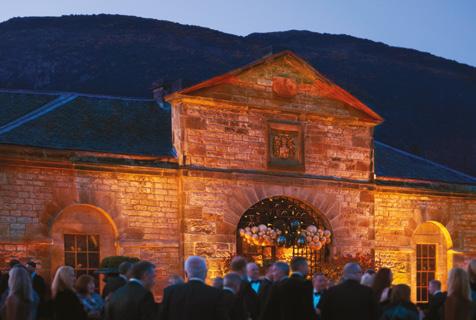
The evening will include a drinks reception with a specially commissioned George Heriot cocktail, entertainment from Magician and Mind Reader Grant Mitchell, followed by a three-course dinner. The night will be compèred by Edinburgh's own Grant Stott who will entertain and lead us through an auction with fabulous prizes.
Guest speaker: Gavin Esler (1971), Scottish journalist, television presenter, author and Former Pupil.
There will be entertainment by the
Eliot Murray Big Band, so bring your dancing shoes.
Hear from the voices of Heriot's both past and present and join us in toasting the Founder to whom we all owe so much. i
Tickets are £95 per person – tables of 8, 10 or 12 are available for purchase. Please visits the Herioter Hub to purchase a ticket or contact the development team for information.
Former pupils are always welcome to come and visit the school. Book a one-to-one visit with a member of the development team and we will be delighted to meet you and show you your old haunts! Some of the faces who have visited this year are featured here. If you are unable to travel, we are happy to chat about how else we might arrange to hear you stories.
The monthly Coffee Mornings are a popular way to visit school informally and meet other former pupils for coffee and pastries. These run on the last Wednesday of each month, from 10-12 midday, with the December Coffee Morning usually taking place just before Christmas. Coffee Mornings are free, you just need to tell us either via the Herioter Hub or via telephone, that you’d like to join us, so we can make sure there are enough pastries!
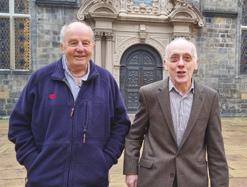
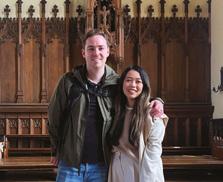
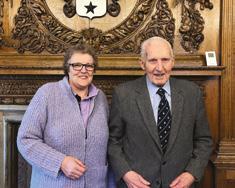
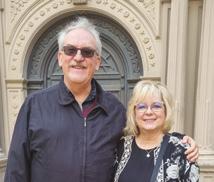
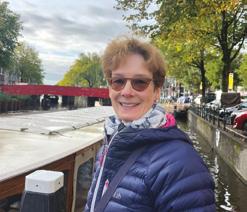

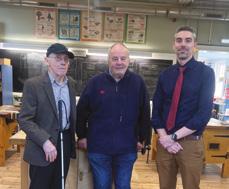

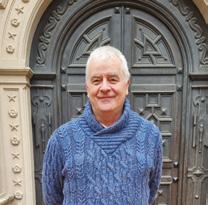
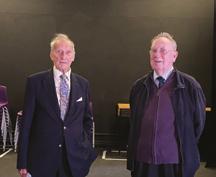
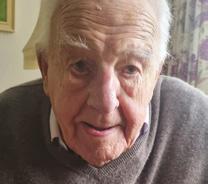
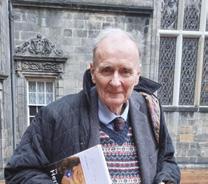
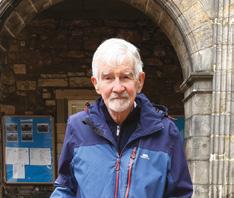
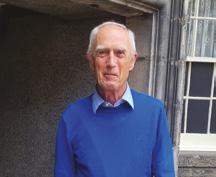

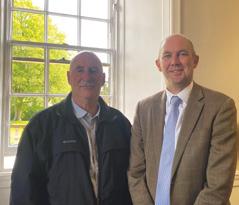
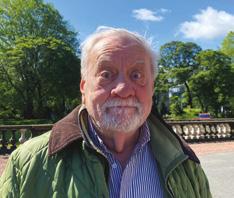

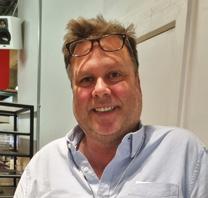



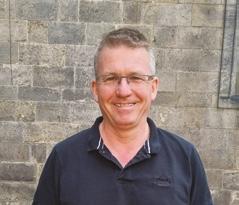
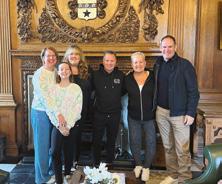
Not many young people have attended a school which is more than 400 years old and it is no surprise that almost a hundred answered the call of providing memories of their schooldays as the 400th anniversary of the founder’s death approached. Carefully edited by Miranda Henderson and Fraser Simm, they have produced an impressive account from pupils stretching from 1935 to 2003, as well as interlacing the text with an evocative range of photographs.
Jingling Geordie made his money by selling jewellery and lending money to buy it to the pathologically jewelleryfixated Queen Anne of Denmark. £60 000 pounds worth was unaccounted for on her death. Heriot left £22,000 in 1624 and £16,000 of it went on the hospital for the oft quoted ‘faitherless bairns’, nowadays also ‘mitherless’ ones. £16,000 is deemed to be worth a present day £3,000,000, which seems low. If the main building came on the market at that price today, I’d jump at it. Although it must be said that that sum probably wouldn’t get you a basement to attic property on Heriot row.
The school has provided 5,700 bairns the opportunity to receive a fine education and it is fitting that some contributors, themselves ‘foundationers’, have taken the opportunity to reveal how much this meant to them. I was especially touched to read of the trials and tribulations experienced and surmounted by Dave Syme, without a father and a mother with MS, running his household with multiple extra jobs while still a
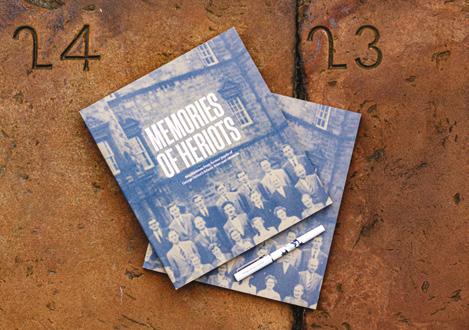
young boy. Dave was the youngest captain of the F.P. first XV and I still remember the encouragement he gave me as a young man coming into the team. I ‘phoned him while writing this review, making contact for the first time in about 65 years, and was delighted to find him hale and hearty at the age of 90.
What should one reminisce about, often in old age, when returning to the ‘happiest days of our lives’? There are of course a wide range of possible subjects: studies, friendships with other pupils, sporting activities, relationships with teachers, military training, the school in a wider perspective, or just recounting amusing incidents.
A bit of everything is to be found in the accounts but some memories
seem to have been more pervasive than others. I was impressed by the number of contributors who heaped praise upon their teachers in the early years of their schooling, from 5 to around 8. Perhaps the best of these came from Graeme Crawford, every inch a Herioter to this day.
The number who had stories to tell about WW2 and Officers Training Corps (OTC) was impressive, perhaps not unsurprising in that the review period encompassed a World War and its aftermath.
I was surprised that relatively little was written about the school’s sporting achievements or the leading lights worshiped by the younger pupils.
A memorial book is not the place
for harsh criticism of course, but as someone who has spent his whole life in education I was also surprised to note that more or less nothing was offered about what alternatives the school had to those heading for university and a career thereafter.
The central theme in the book is of course the teachers and the many forms of interplay they had with the pupils, both in the classroom and elsewhere. Considerable interest is devoted to the headmaster from 1947 to 1970, a William McL Dewar, alone in wearing a mortar board throughout his career. It could not be said that he endeared himself to all around him, but I shall return to that in an attempt to provide a more rounded image (I attended the school from 1947 - 1958).
I was surprised at the number of male contributors who frankly confessed to not being very good academically or at sports, or in fact at anything. Fortunately, most of them turned out to have moderately successful lives after facing up to the rigors of adulthood. This could be a non-representative sample of course; those who are now relying on food banks and temporary accommodation were unlikely to put pen to paper or fingers to keyboard.
I was also struck (no pun intended) by the number of contributors who mentioned the belt as a disciplinary measure. Most shrugged it off as being one of the obligatory aspects of schooling. To me it was astonishing to read of much-loved primary school teachers wielding a strap with the best of them. After the 1990s, an adult attacking a sixyear old with a heavy leather strap would normally render a custodial sentence.
Not much was written about the sporting achievements of the school. K.J.F. Scotland gets a brief mention, but he remained a hero for my generation until his passing away at 86, a year ago. As quiet and unassuming a superstar as you could ever meet. Nor do we hear anything about Andy Irvine, another great British Lion who was unstoppable as an attacking full-back. And what about Iain Milne ‘The Bear’ and his two brothers, who all played for Scotland and once, memorably, made up a Barbarian’s
front row! Finally, the Heriot’s seven, which won the major Sevens tournament at Twickenham and all the Border Sevens during a purple patch in the early 50s. Or the scrum-capped winger Jimmy Weir, who recently passed away at 90, delighted the sevens’ crowds with his jinking runs. Perhaps we’ll hear more of them in a second edition.
There was a nice little cameo from Dr Ian Smith who was told off for running on to the field at Murrayfield after a match and leaving a token thistle on the pitch. He had some revenge 16 years later when he returned to score a try for Scotland as one of the many Heriot’s fullbacks (he has recently published an autobiography).
But it was not rugby that has stirred the memories of contributors but rowing, which has attracted several devotees. The school began rowing in the mid-1950s, a few years before I left. Those of us who played rugby regarded it as an aberration, not much above the cross-country ‘weeds’ who strolled around Inverleith Park once a week. My image of rowing was of punting at Oxford with an amorous young man quoting Rupert Brooke to a receptive female undergraduate. It was only after Britain began to do well at the Olympics that philistines like myself realised that rowing was one of the most physically demanding of all sports. The
successes and vicissitudes of the sport are told in several accounts where coach Bob Neill looms large. On his retirement a fund-raising event was held to buy a boat in his honour.
Dr Dewar was headmaster of the school for 23 years from 1947 – 1970. He was a relatively young 42 when appointed and remained until his retirement. His doctorate was an honorary one, awarded relatively late in life, but he insisted on using the title ubiquitously (not the done thing, mutters someone like myself with a real PhD). He was born in Crieff, studied Classics at Edinburgh, and started his career on the West Coast before coming to Heriot’s. It was difficult to place his accent, I think he had created it himself as an amalgam from the parts of Scotland in which he had spent time. He spoke in a rapid, clipped manner which was also unique. When announcing which of our many rugby teams were to wear a blue or striped jersey on Saturdays, he did not pronounce the s as a z, but rather as a double s. I can still hear him hissing ‘Blue jersseys will be worn’ in his composite Scottish accent. He was almost completely bald when he arrived at Heriot’s but this was concealed by a mortar board until his retirement. He always moved about at speed, with academic gown swirling. He was perhaps 5 ft 7 in (1.70 m), with many senior
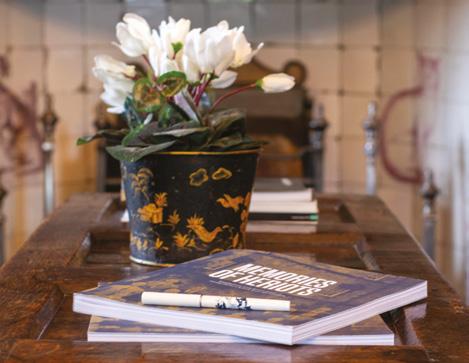

boys towering above him. In later years I have come to think that, to a large extent, his whole persona was an act, his personal impression of what the old-style headmaster of a distinguished, ancient school should be. He played the part rather well, putting the fear of death into many pupils and perhaps younger staff, laying down the law, pontificating and making sharp judgments on all relevant scholastic matters. He was on the whole respected.
Yet there were other sides to Dr Dewar. When myself and other younger boys were the subject of bullying by senior pupils he went to great lengths to interview us and take appropriate action. When in my 6th year I asked if, along with science subjects, I could study lower Spanish and Italian he made considerable efforts to arrange this. I sat in on Spanish classes with the impressive Dr Cooper and a trio of himself, the depute headmaster McKerrow, also a classics man, and ‘bouncer’ Stott in charge of the Italian studies. They stuck to their tasks and got me through, although the only word I recall learning from Dewar was “inchiostro”, an inkwell, which may have been useful in the 1920s when he had spent some time in Italy. He had picked up a fair amount of colloquial Italian but was a bit shaky on the grammar. Every time we reached a tricky point,
he repeated several alternatives out loud until he chose one that sounded right. Much later when, in the course of some family emergency, my mother arrived from England with my much younger brother, Dr Dewar got him into Heriot’s in no time, where he completed his studies with, I surmise, very little money changing hands in the way of fees. A contributor notes that his mother was amazed when in a casual meeting Dewar asked, accurately, how her not particularly notable son’s academic studies were progressing. He admitted he liked to take an interest in how former pupils were doing; this with around 150 leaving school each year!
So take your pick: Dewar the helpful, constructive, interested and considerate family man versus the harsh, unyielding, authoritarian persona he created to run the school. I’d like to have seen more of the private Dr Dewar than the invented one.
Another teacher who was mentioned a few times but without recording his achievements was games master Donald Hastie. One contributor stated that he was a great rugby enthusiast, which was not correct. Three mention that he disallowed a try when another player patted the scorer on the back (for it is unseemly so to do). As we nowadays watch the 8 reserves in internationals hurl
themselves on top of a try scorer one may feel that he had a point.
Hastie was first and foremost an athletics enthusiast, at one time Scottish pole vault champion. He organised the sport at Heriot’s brilliantly, we never lost a contest against another school and we dominated the Scottish Schools Championship every year. There were U14, U16 and Open age groups and I recall one year that we won 9 av 36 titles, including all three relays. Not bad with over 100 schools competing.
We knew there was a certain opposition to a games master being appointed, but it was not until later we realised how deep-rooted this was. Charlie Broadwood may well have been unhappy that he no longer coached the Firsts, but his appearances in the book mainly refer to what I regard as his appalling snobbery.
There are a few mentions of English teacher Westwood. He ran a club after school with various hobby activities, but his eccentricities extended into schooltime as well. There is a picture of him supervising a class reading of The Merchant of Venice (has anyone noticed that Shylock was played by Roy Kinnear) where the cast are all wearing inappropriate headgear from a stock maintained by Westwood. He also features in a snowball fight with pupils. My father, who was a bookseller in Thin’s came across him there one day. He was wearing a bright red tie and without prompting stated loudly that he was wearing the tie in the hope that the next atom bomb would be dropped on Moscow. My father, as they used to write in the News of the World, made an excuse and left.
As a non-military man it was fascinating to read about the range of activities in which the OTC was involved. For many it was central to their school memories. I liked the story about the two scallywags hitchhiking to the ‘Big City’, London for nefarious purposes, dressed in their OTC outfits, easily confused with professional soldiers. But there are many accounts of more serious matters where the OTC made a contribution.
Another teacher who received favourable mention was history teacher
Willie Gould, the Mogul, well known for his cards signifying important historical events. I still wake at night, sweating, with the words ‘Alaric the Goth sacks Rome 410’ ringing in my ears. Did we learn anything about British enrichment through slavery, the horrors of the British Empire, the 4000 witches who were murdered in Scotland and a host of other reprehensible events. We did not, but Alaric the Goth lives on in my memory. Girls were allowed at Heriot’s from 1979 and a very few will now be approaching retirement. Only about half a dozen answered the call and sent in contributions. The tone of their memories is slightly different to that of the men. They were all very motivated at school, did well and spoke highly of the teachers, especially the female ones. There was no hint of interacting in any way with the boys. For that matter I cannot find a single reference among the boys to associating with the girl pupils after 1979, apart from a yearly hockey match. Did they really live in parallel universes or is there a conspiracy of silence?
The book is well-mannered and polite with no risqué stories being recorded. One semi-naughty one came from a contributor making an embarrassing faux pas when confusing two faux amis, rendering Spanish ‘she restoked the brazier’ by ‘she removed her brassiere’ and having to translate this in front of a very attractive female trainee teacher. I feel compelled to overstep the bounds of propriety when I recount a similar and also true experience in Spanish class. In a pastoral setting we had to translate ‘L’agricultor tiene tres gallos’ (in English ‘The farmer has three cocks’). The class was suspended until hysteria subsided. The textbook author writing for 14 year olds must have lived an extremely sheltered existence and one also wonders about the proofreader.
One area I would like to know more about is the manner in which Heriot’s moved in my time from a rather limited preparation for careers and/or universities to in recent years a much wider range of opportunities. In my day the 6th year alternatives were science,
engineering and, indirectly, medicine. So that was what we studied. Yet many were working in a completely different professional activity a few years after graduation. Doctors remained doctors, but in my age group 13 of 14 emigrated (free education in Scotland, huge salaries in other countries where education costs a fortune). The school’s academic achievements were not too impressive; in open academic competition we were regularly outclassed by, dare one say it, Watson’s. Fifty years later, Heriot’s is an outstanding academic institution with a wide range of opportunities, although perhaps not so strong on the sporting side. How did that transformation take place? What latter day memories could that engender? Perhaps another edition of the Memories of Heriot's is required to deal with these issues.
In conclusion, Memories of Heriot’s provides a few laughs, a few tears and a remarkable range of information about Heriot’s and its pupils, of which you weren’t aware. Buy it and add to Heriot’s Foundation400 fund. i

Memories of Heriots is available now. Collated during lockdown and in the long contemplative months which followed, Memories of Heriots contains reflections from 87 former pupils, from 1935 through to 2003, recording stories from characters who attended George Heriot’s School during these years.
Memories of Heriots can be purchased on the school website via the shop: www.george-heriots.com

Heriot’s is materially fortunate not only in the architectural heritage but also to be in possession of many amazing historical artefacts spanning the 400 years of the school. School Archivist Carolyn Sharp reports.
Many fascinating artefacts are still being discovered to this day; from a pair of gent's breeches discovered in 1952 packed deep into a wall, to a diary dating back to 1624 recently unearthed in a box of theatre programmes. The school’s librarian and archivist Carolyn Sharp has risen to the mammoth task of stewardship of the archives, and is successfully uncovering, cataloguing, maintaining, and initiating repairs of artefacts, ensuring these precious items are preserved and restored for the next 400 years.
Many of the artefacts are discovered in a state of disrepair, to the untrained eye they may even seem irreparable. Not only this, but preserving these items is expensive three notable documents have recently been commissioned for restoration and this expert cleaning and stabilising with Japanese paper quickly toted up to £1,800.
Auld Callant song
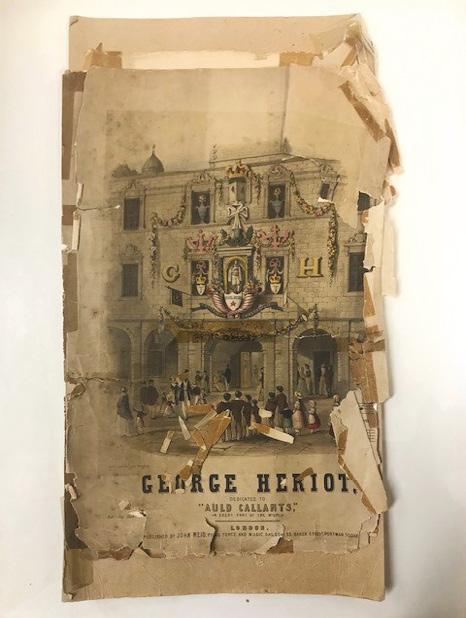
The first ‘treasure’ is a rare copy of King William’s III speech to Parliament in March 1688; uncovered as repairs were made to the Southwest Turret, (tucked away with the aforementioned breeches, making wonderfully regal draught excluders!) You will see from the images the speech is titled, ‘His Majesties most gracious speech to both Houses of Parliament on Saturday Sixteenth March. 1688.’ To those canny historians reading this you will shout “King William III did not ascend the throne until 1689, yet the speech is dated March 1688!” But you will also remind us, this was due to anomalies from the later adoption of the Julian calendar. This date is of great historical importance, as in the months and years to come, and especially during the deliberations of the Convention Parliament in Edinburgh, the proposals which would form the subsequent Act of Union 1707 was gaining favour amongst Scots nobility.
Our second treasure painstakingly preserved is the Hospital food and ale records, dated 1720-22. Found whilst the Charter Room trophy cabinets were removed for repairs, dusty and tied tightly in rolls, these papers were brittle, fragile and could not be opened for fear of further damage. Saved for prosperity only by the work of the conservators, these monthly ledgers detail the purchase and issue of bread, beef, lamb, milk, candles, barley, and ale. Note the use of Scots and Gaelic for the liquid measurements, a ‘Chopin’ or ‘Mutchkin,’ a half pint or three-quarter pint, respectively, issued for the boys’ sustenance, safer than water at the time, far removed from what is offered in the refectory today!
Our third treasure donated and restored in Summer 2022 is a 19th century ‘Auld Callant’s’ song score.’ The ‘Auld Callants,’ (the colloquial term for former pupils, ‘callant’ being Scots for “lad”) was composed by Charles Horn, with words by the infamous author George Soane, who (amongst other things) spent time in prison for debt and fraud. Sadly, one page of the score is missing, however the colour and artwork is now in beautiful condition, giving a hint to its importance. We would hope to have a recording of this made, if
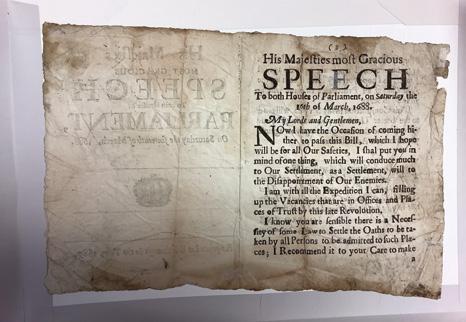
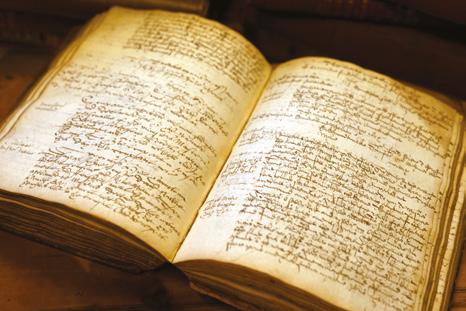
only we could find that missing page. Whilst we cannot date the score, we can surmise it was written during the life of the composer and the existence of ‘Auld Callants’ club, therefore suggesting circa 1834 – 1841.
With 400 years of history at the Lauriston campus, we are sure to continue unearthing and discovering such rare and fascinating historical treasures. We will continue to preserve and showcase what we can. If you are interested in archives, history or in supporting us in this endeavour, please contact the Development office. i



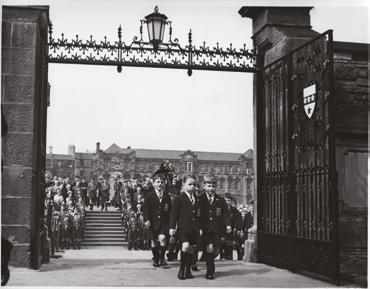
Once a Herioter, always a Herioter
The school’s global network of Former Pupils is a vital component of life at Lauriston Place and in taking the Heriot’s name and ethos out into the wider world. The Development Office role is to keep Former Pupils and friends of Heriot’s involved in the life of the school, and in contact with one other.
What does The Hub offer you?
Regional Clubs, such as Herioters in the USA, Asia, Europe, Africa, and South America. Our Australia Club is one of the most active regional clubs this year, holding their own June Day lunch, quizzes and get togethers. If you are willing to head up a regional club, please let us know.
The Sports and Interest Groups offer many activities to connect with other Herioters, from Cycling, Rowing, Winter Sports, Rugby, and Hockey to Pipes & Drums. Why not help us launch a club that is relevant to your interests, and connect with Former Pupils? A debating club, wine club, or even a Herioter’s Book Group perhaps?
Professional groups. As Former Pupils you will know how useful connections to other Herioters can be. Use the Hub to network with people in similar lines of business, industry, and expand your professional network. The Hub offers an expansive range; Lawyers, join our Law Network, Entrepreneurs, meet likeminded startups. Or why not get involved in the ‘Leading Thinkers’ or ‘Environment & Sustainability Network’? You can also add your own business to the Business Directory – this is free to Herioters.
Find Classmates. Currently there is a link in the Hub for every year group! Find your year, join, invite your former classmates to sign up. We have found many Former Pupils reconnecting with classmates otherwise lost to the past.
One of our most popular tools has been the Archives portal, where we can aid in Family Research, or help you explore the history of the school. By signing up today, you can keep abreast of all that is being shared and discovered by Former Pupils about the school.
It will not escape many people’s notice that there are families who have attended George Heriot’s over several generations. We have gathered some family stories which will run over the next few issues of Quadrangle, in this first part of this series we feature the Fiddes family. Look out for the Purves and Irvine families to name a few. If you would like to share your Generations of Heriot's family story, please contact the Development Team via dev@george-heriots.com
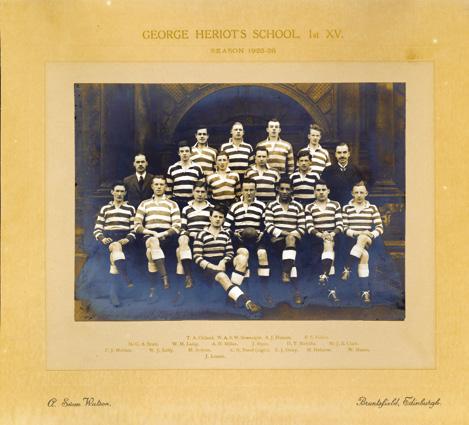
The Fiddes name will be known to many of our readers from different generations. We spoke with Jim Fiddes (1959) this January about the family's generational connection to George Heriot’s School. While speaking with Jim it was clear he desired this article to be about his father and brothers rather than his own time at George Heriot’s. But we would be remiss to not include his varied connection over the decades.
Frederick Smith Fiddes (1926) was born in Edinburgh on the 1 September 1907, the younger son of Sergeant James Fiddes of Edinburgh City Police. Frederick won a scholarship for George Heriot’s School in 1918, which began a life-long connection with the school, as School Captain, Governor, President of the Heriot Club, and President of the Rugby Club.
His impactful reputation had his Headmaster, John Brown Clark say, ‘He has done very well this year, with three medals to his credit (English, Latin and History). Captain of School, winner of the Robert Louis Stevenson Prize for Literature, and quiet and gentlemanly, an excellent type of boy.’
On leaving Heriot’s Fred matriculated at Edinburgh University, to study Medicine in 1926, the beginning of a lifelong career. Graduating in 1931 as a medallist in surgery, top of class in psychiatry, top of class in psychology and ‘Proxime Accessit’ in both Pathology and Bacteriology. Not long after his graduation a career in medicine, in particular General Practice ensued, starting with locums in Scotland and as a Ships Surgeon, taking Fred away from Edinburgh for the first time.
By 1936 Fred had returned to Edinburgh taking the position of Deputy Superintendent of Gogarburn Hospital, this was to happen after a serendipitist meeting with a friend in a local pub where they discussed the idea of a job swap, one which was soon formalised and authorised, not something one would imagine happening very often in the modern era. But as it was, so began an illustrious career in forensic medicine.
As war was declared in 1939 Fred would spend his war years in various medical roles, serving in RAMC with successive ranks of Major and Lt Colonel, serving with the Welsh division during the Battle of Normandy and remaining with the division throughout the Ardennes campaign.
Fred would go on to be awarded the OBE for the very difficult work he would carry out at Sandbostel Concentration Camp near Bremen, for those of you that would want to read further, Fred’s harrowing report is available at www. wellcomecollection.org. Beyond the writing of this report, this was a time in his life Fred would talk very little about.
After the war, Fred returned to Edinburgh and resumed his position of senior lecturer in Forensic Medicine alongside Sir Sydney Smith at Edinburgh University, a job he would retain until his death in July 1972, his final role was of Head of the Forensic Medicine Department. During this time Fred would play an important role in the study and growth of Forensic Medicine, co-authoring the Textbook of Forensic Medicine with Sir Sidney Smith. As he became more known for his speciality of the study of blood groups in criminal and

civil cases, he would be consulted upon by medical and legal professionals alike. Fred was particularly proud of his position of Police Surgeon for the City of Edinburgh, a connection to his own Father’s career. While building a career and a successful reputation, Fred had married Primary School Teacher, Grace Fraser in 1938 and three sons followed. The first would bring him back to Heriot’s as he walked his son Jim (1959) through the Gates of Lauriston Place in the late summer of 1946, in due course followed by two further progenies, Bill (1965) and John (1968).
Fred’s relationship with the school deepened with him dedicating himself to the role of Governor, all while leading the Edinburgh Former Pupil body as President
of the Heriot Club, and subsequently President of the Rugby Club. During this time his sons prospered and carried the baton for the Fiddes family forward. Eldest son Jim was told he was just like his father, but while he was flattered, he is to this day aware he ‘lacks the excellence of his attributes’, something Jim is content with. But it is undeniable how much Jim followed in the footsteps of his father as he traipsed the grounds of George Heriot’s. Like Fred, Jim would also go on to hold the School Captaincy, Captain the Cricket XI, and Rugby XV, before venturing onto an Estate Management Degree at Gonville & Caius College, University of Cambridge. And just like his father before him, Jim in due course would return to Edinburgh and become a Governor.
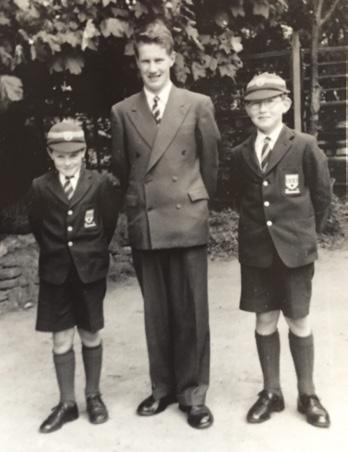

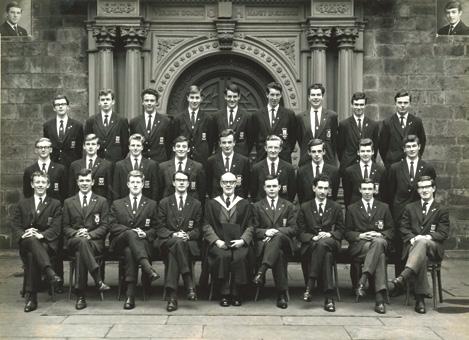
Younger brother Bill would take on and continue the connection to medicine. While at Heriot's, Bill was awarded Colours for playing Rugby and was a brave hooker for the FP XV. As with Fred, Bill studied medicine at Edinburgh University and after a year in Aberdeen, he returned to Edinburgh’s Royal Infirmary to continue his training, subsequently becoming a GP in the Borders. Bill would retain his connection and commitment to Heriot’s through his active membership of the Borders Herioter Club. Bill would become known as ‘the people’s doctor’ and is remembered fondly as a man who gave an unstinting service to his community in Selkirk for 27 years. Bill sadly passed away in 2016. After studying for a BSc in Social Sciences at Edinburgh University, and a further qualification in social work at Aberdeen University, youngest brother John (1967) kept with Fiddes tradition and played both Rugby and Cricket,
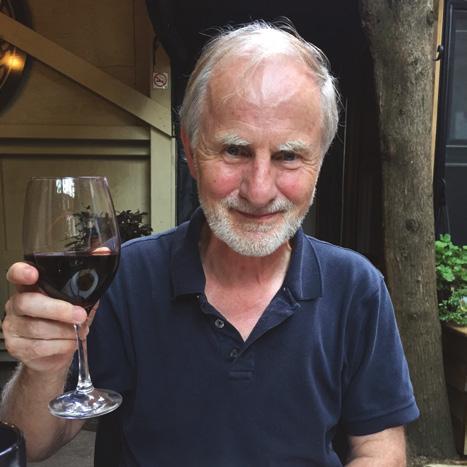
which continued into adulthood, playing Cricket for the FPs and Aberdeen University. John would then spread his wings and take his branch of the Fiddes family to Canada, a career in Social Work followed. But, as a lifelong active musician, John is most known for his music and is currently a legend in his hometown of Midland, Toronto.
A third generation of Herioter would arrive through the Gates, this time Jim’s daughter, Rachel (1994) carried the torch for the family through the 1990’s before she moved onto the University of Northumbria and a career that would take her to Australia working in Film, Radio, Televison, Festival Production, including a stint with the Edinburgh Film Festival, and now back in the UK, recently working for the BBC and Channel 4. Without doubt, the Fiddes family have committed themselves to George Heriot’s School. Heriot’s became a part of the fabric of their family, while they in
turn became part of the fabric of the school. Most recently we had the pleasure of Jim’s company as he enjoyed the Pipe Band Recital in June as part of the We are all George Heriot campaign, proof of his unwavering kinship with the school. i
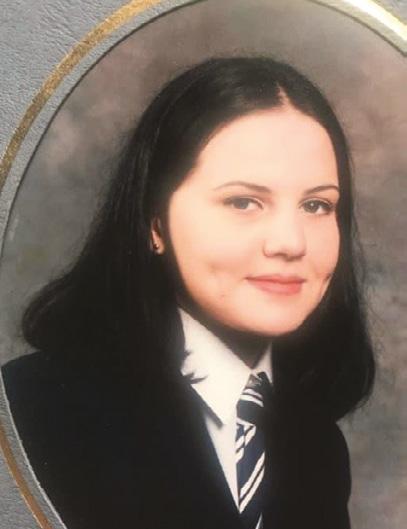
Dr Norman Irons Cbe Dl (1959)
Born 4 January 1941
Died 26 November 2023
Born in Glasgow, Norman moved to North Berwick when he was three months and his lifelong involvement with Heriot’s began when he walked through the gates of the school with his father at the age of five. However, his Dad only dropped him off and collected him for the first few days; thereafter he recounted that he would make his own way up from St Andrew Square and back at the end of his school day, hopping on the bus (always thick with smoke) as it slowly made its way back to North Berwick.
After leaving school he attended Napier, where he was awarded student of the year, before studying engineering in London. During this time he met Anne whom he married in July 1966, and who was his loyal companion for almost 65 years. They had two children, Kenneth and Elizabeth, both of whom attended Heriot’s.
Norman began his career with the international engineering consultancy, Steensen Varming Mulcahy Partnership; his interest in politics began at this time. He burst onto the local political scene with a stunning by-election win in 1976, which saw him secure his seat in North East Corstorphine on Edinburgh District Council with a majority of 36 votes. It was not expected that he would retain his seat but, Norman’s hard work and diligence were repaid with his re-election as a councillor throughout the 70’s and 80’s.
His devotion to public service, his kindness and generosity of spirit were elevated to a new level when he became Lord Provost & Lord Lieutenant in 1992. It was his greatest honour to serve the city that he loved. He was funny, fearless and self-effacing. He had an innate ability to connect with people and was genuinely interested in everyone he met, extending a
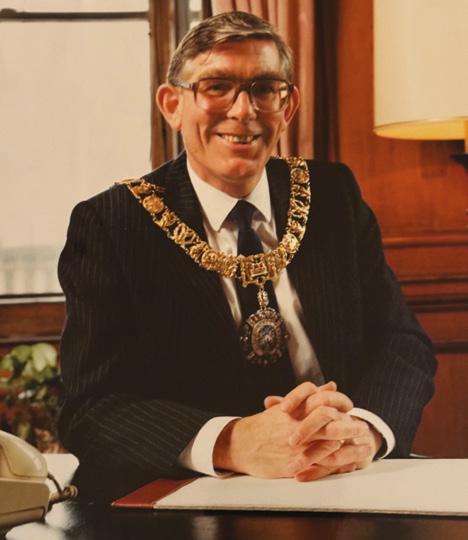
hand of friendship, no matter their creed, class or politics. Norman was honoured to walk with Kings & Queens but was equally happy to lead a kilted conga down the High Street or abseil down the City Chambers to lend support to charity.
He continued his professional work throughout his tenure as Lord Provost, often getting up at the crack of dawn to do several hours work before beginning his civic duties.
With Anne at his side, Norman gave extraordinary commitment to his role as Lord Provost, chairing the Edinburgh International Festival and the Edinburgh Military Tattoo, serving on the Boards of Capital Theatres and Dynamic Earth. His
dedication and service were recognised with a CBE in 1995, Honorary Doctorates from Edinburgh Napier University and Heriot Watt University; he was also made an Honorary Fellow of the Royal College of Surgeons.
First Minister, John Swinney MSP, reflected “Norman and Anne worked tirelessly to welcome people to the City and to represent the City. For each of them, the privilege of being Lord and Lady Provost was about service; serving the people of this City and working to make the City the dynamic, diverse, outward looking and welcoming place it is today. Our great Capital City of Scotland has been served by many distinguished
individuals as its Lord Provost. Norman Irons was without doubt one of them.”
After retiring as Lord Provost, Norman continued public service among the wider international community, as the Consul for Denmark and subsequently Hungary, and as Dean of the Consular Corps. His warmth, wisdom and dedication were evident among everyone he met; and he fostered a vibrant diplomatic community. With his consular work he was made Commander with Star Royal Norwegian Order of Merit, the Knight’s Cross of the Order of Merit of Hungary and Commander of the Royal Order of Dannebrog in Denmark.
Cristoph Crepaz, Dean of the Consular Corps said “Norman's dedication to fostering international relations was evident through his career … he played a crucial role in strengthening ties between nations. His commitment extended beyond borders, leaving an indelible mark on the Consular Corps and the broader diplomatic landscape. His leadership as the Rt Hon Lord Provost of the City of Edinburgh from 1992 to 1996 showcased his unwavering commitment to public service and is a testament to his vision and determination. His warmth, wisdom, and willingness to collaborate were instrumental in creating a vibrant and supportive diplomatic community.”
For most of us, the responsibilities of being a consul would keep us sufficiently occupied but Norman relished being busy – which was fortunate for the many organisations who approached him for support. The Boys Brigade, the Royal Scottish Country Dance Society and the St Giles Renewal Appeal Trust were just a few that benefited from his insight and knowledge.
And, of course, George Heriot’s. He was delighted to be appointed as a Governor of the School, a position he held for 20 years, and relished his involvement in all aspects of school

life. He was an assiduous participant at Governor’s meetings, an energetic chair of the buildings committee, and an enthusiastic attendee at Junior and Senior school productions, sports day and the Christmas concert; Norman was often found on the touchline at Goldenacre, watching the 1st XV and enjoying companiable afternoons with friends. He was thrilled when his two granddaughters, Lucy & Eilidh, became the third generation to attend the school.
Diagnosed with Parkinson’s in 2015 Norman’s life continued little changed as he pressed on with life at pace until Covid. The impact on his health, as for many others, was significant. He
was, however, irrepressible and had an indomitable spirit. He refused to be house bound or defined by his illness.
He knew he could not be saved from the ravages of Parkinson’s, but Norman hoped that he could help others. In his final act of selflessness, only a few weeks before his death, he consented to donate his brain to the Imperial College Brain Bank, which is researching the cause of and seeking to find treatments, and ultimately a cure, for Parkinson’s.
Norman Irons was a staunch Herioter, proud ambassador of the city and countries he served, devoted family man and a steadfast and loyal friend to many. i
Ian Bairnson (1972) Died 7 April 2023
The Alan Parsons Project, Kate Bush guitarist and Former Pupil Ian Bairnson has died, aged 69. Words by Alan Parsons: "I have always considered Ian a musical genius." Bairnson featured on every Alan Parsons Project album, as well as four of Parson's solo albums. "It was a great pleasure to have him participate on every album by The Alan Parsons Project and several other albums under my name since," Parsons said.
"Ian was a true master of the guitar – he knew every possible playable guitar chord and how to describe it – for example “G Minor Sixth Add 9” or "C Sharp Major Ninth Add 13", but amazingly, he never took the time to learn conventional musical notation. Another indication of his incredible talent was when he picked up the saxophone and played it like a pro on stage with the British incarnation of The Alan Parsons Live Project, he had only spent a few short weeks of learning the instrument.
Born in Lerwick in Shetland, Bairnson learned to play guitar aged six and initially started out as a session guitarist. He joined the power pop band Pilot in 1974, having turned down an
Dr Alastair Cochran (1948) Died 13 March 2024
Dr Alastair Cochran, the author of a book many have described as ‘The Bible’ for golf coaches and an invaluable collaborator with The PGA on coaching and equipment, has passed away at the age of 94.
Educated at George Heriot’s School and Edinburgh University, Alastair studied Physics and Nuclear Physics in attaining his PhD and followed up by working primarily in academic institutions.
These included the Royal Military College of Science, Liverpool, and Aston Universities, plus industrial research with Ferranti and the Atomic Energy Authority.
When time allowed, Alastair was
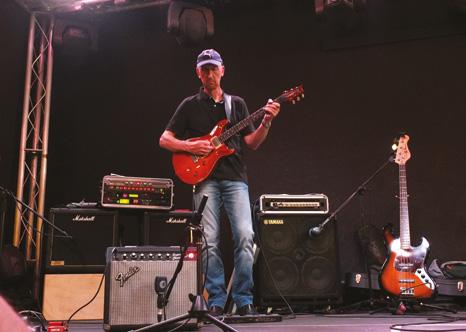
offer to join Cockney Rebel, and with whom he scored with the evergreen hits Magic and January, both of which were produced by Parsons. Alongside his fellow Pilot members David Paton (bass) and initially Stuart Tosh (drums) and Billy Lyall (keyboards), he would be a musical mainstay of the Alan Parsons Project.
Bairnson also played guitar on Kate Bush's first four albums, The Kick Inside, Lionheart, Never For
Ever and The Dreaming, notably playing the breathtaking guitar solo on Bush's No. 1 smash hit Wuthering Heights, of which social commentator and television personality Clive James once said you found yourself "turning up the radio to catch every last note of that exultant solo".
Bairnson worked with Jon Anderson, Mick Fleetwood, Chris De Burgh, Neil Diamond, Eric Clapton, Joe Cocker, Sting and Bucks Fizz. i
not only a keen but accomplished golfer. He played off scratch in his 20s and, a member of Moor Hall Golf Club, Sutton Coldfield, and the R&A, continued to play more than 60 years later.
He combined his enthusiasm for the game with his scientific expertise and in the mid-1960s had a four-year spell as the Director of the Golf Society of Great Britain’s panel of scientists, studying the golf swing and related matters.
In addition to carrying out much of the theoretical work and mathematical analysis involved, Alastair co-authored the book that resulted from the project: The Search for the Perfect Swing. i
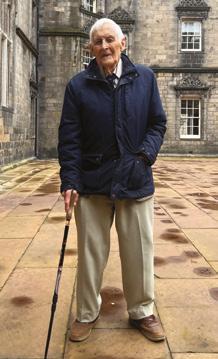
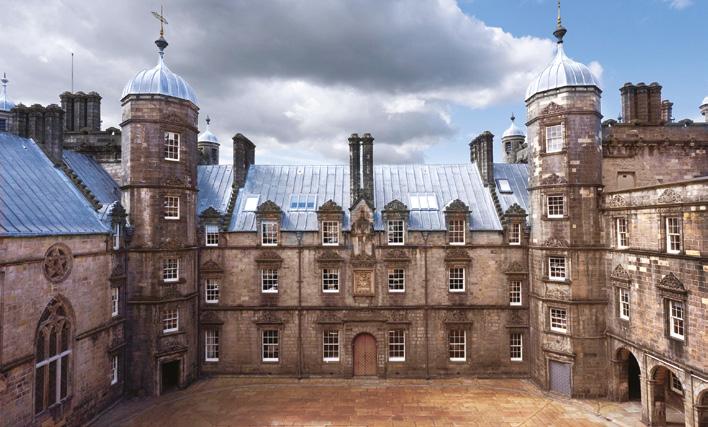
Pipe Major John Allan 1990 – 2005
Died 1 April 2024
The man o’ independent mind.
April 2024 sadly saw the passing of Pipe Major John Allan, a man of many parts, our renowned Highland Bagpipe teacher at George Heriot’s from 1990 to 2005. Less known, due to his enduring modesty, is that before 1990 he was Director of Army Bagpipe Music at Edinburgh Castle; involved in 24 military tattoos, Senior Pipe Major of the British Army and awarded the MBE by the Queen in 1989.
Major Allan was a truly memorable teacher, whose integrity spoke volumes of the caliber of the man. He had a
Roy Veitch (1958)
Died 2 October 2023
Roy joined Heriot’s in the 4th year, having started secondary education in Buckie and Thurso.
He had never played rugby and, advised to choose a different sport, he took up running, and continued passionately with this until his seventies. Another lifelong interest was music, and he was secretary of the music society in the 6th year.
Most of all, he enjoyed the ethos of rigorous academic expectations and was
worldly wisdom, which he imbued to his students with patience and care. Never one to mince his words, should our playing fall below par he would rightly muse “the pigeons in the playground can whistle that better.” He was a stickler for accuracy and getting the basics right, tight grace-notes a must! Beyond competitions, he trained his students in the art of piping for all occasions (be that parades, weddings, funerals, or Burns suppers). A Heriot’s Piper taught by John Allan played with decorum; who could forget the majestic skirl on June Days in the Quadrangle or Highland Cathedral in the Usher Hall!
Whilst firm at times, Major Allan was a kind and cheery man, whose
Dux in the 6th year.
At Edinburgh University he gained a first in Mathematical Physics, before going to Cambridge to do the Mathematical Tripos Part 3.
Then followed seven years in the research department of ICI (Billingham), until 1971, when he took a job in the mathematics department of Strathclyde University. During 1988-1989, to fit in with the requirements of the re-organised Strathclyde maths department, he spent a year at Glasgow University, studying Computer Science for the degree of M.App.Sci.
no-nonsense wit was legendary. Indeed, his upbeat character can be heard in the lively ‘George Heriot’s 1628’ tune he composed; it is played at June Day to this day.
Major Allan was an inspiring teacher and one whose legacy of modesty, integrity and resilience was an immeasurable gift he imparted to his students. As this student, after two decades in the hurly-burly of investment, leaves to retrain as a teacher: I won’t go far wrong if I’m half the teacher, or man, he was.
The honest man, Is king o’ men for a’ that (Burns). Thank you from us all Major Allan. i
– Torcail Stewart
He and his wife moved to Harpenden in 2010 to be close to the family. From then he had increasing medical problems, the worst of which was Inclusion Body Myositis, a muscle wasting disease for which there is no treatment. This was especially cruel for a man who had enjoyed running, cycling, swimming, and mountain walking, but he bore it with fortitude, doing his best to hide his difficulties from other people.
He died in October 2023, and is survived by his wife, Helen, and sons Andrew and Graham. i
Former Pupils
Adams, Alistair (1961), died 17 May 2024
Alexander, Ian McDonald (1956), died 9 June 2022
Arthur, Alexander (1973), died 24 July 2024
Bairnson, Ian (1972), died 7 April 2023
Boon, Graeme (1973), died 24 October 2023
Brodie, Lindsay G. (1958), died 29 June 2024
Brownlie, Gavin (1946), died 13 May 2023
Clark, George (1986), died 28 December 2023
Cochrane, Alastair (1948), died 13 March 2024
Cutt, Ronald (1951), died 12 February 2024
Dodd, George (1949), died 27 April 2024
Dunsmure, James Douglas (1951), died 29 March 2024
Flannigan, Brian Dr (1953), died 11 July 2023
Fraser, Kenneth Steel (1947), died 6 July 2023
Gillies, Alexander (Sandie) (1954), died 7 December 2023
Goulding, Eric (1964), died 13 December 2021
Hermiston, Alexander (1957), died 4 February 2023
Howieson, Captain David (1948), died 31 January 2023
Irons, Norman Dr (1959), died 26 November 2023
Johnston, Adam (1952), died 9 November 2023
Kyle, Alexander (1968), died 1 August 2023
Laing, James (1967), died 26 August 2024
Law, Douglas (1959), died 11 November 2023
Lloyd, Richard Gordon Ogilvy (1963), died 16 December 2023
Lind, Thomas (1946), died 18 May 2024
Lornie, William James (1947), died 18 November 2023
McClaskey, Geoff (1983), died 8 June 2024
Maccabe, Jeff, J (1946), died 16 October 2023
Maclean, Kenneth (1971), died 10 March 2024
Meikle, R (Bobby) 1964, died 10 July 2024
Morris, John MacDonald (1953), died 6 December 2019
Munro, John (1968), died 22 July 2024
Spalding, Stuart (1951), died 28 December 2023
Sinclair, James McArthur (1953), died 15 Nov 2023
Stewart, David (1956), died 9 August 2024
Swanston, Alan (1949), died 20 March 2024
Turner, Joseph (Lex) (1937), died 5 August 2024
Waitt, Bruce (1954), died 4 April 2023
Walker, John (1952), died 13 March 2024
Wilkie, George Davidson (1937), died 6 February 2024
Williamson, Scott (1973), died 9 April 2024
Veitch, Roy (1958), died 2 October 2023
Former Teacher
Allan, John – Pipe Major 1990 – 2005 died 1 April 2024
Fairley, Thomas (Tom) – Teacher of Mathematics 1956 – 1967 died 9 October 2023
Fogarty, Isabel – Teacher of Business Studies died 3 December 2023
Proudfoot, David – Teacher of Computing Science 2010 – 2014 died 15 July 2024
Former Governor. Norman Irons (1959) died 26 November 2023
2023 – 2024
The Principal and Governors wish to express their warmest thanks to all Herioters, Current and Former Parents, Current and Former Staff and Friends of the School who generously made donations this year. Your gifts are so gratefully received and allow us to maintain Heriot’s excellence for future generations.
Class of 1940s
David Burnett
Alex Gillies
Mr Maurice McIlwrick
Class of 1950s
Norman and Maureen Anderson
Maxwell Dow
David Doyle
William Drummond
In loving memory of James Douglas Dunsmure
George Gordon
Tom Jessop
Hunter Mabon
Bill and Janet McDonald
Willie McVicar
Jim McVicar
Ian Alexander Millar
Ronald Rangecroft
Eric Robertson
Hamish Stears
Bill Stevens
David Syme
R J M Wilson
Class of 1960s
Jack Aitken
James Baxter
David Bishop
J Borthwick
Alec Brown
Dougie Bruce
Gerard Dott
I Duncanson
Charles Edmond
John R R Fowler
George McNaught
Mr Mike and Mrs Win Gilbert
Ian Douglas Gillian
Duncan Grant
Dr. George Holywell
John Hunter
Morgan Jamieson
Sir Brian Langstaff
Christopher Lee
Norman Leslie
Iain Mackintosh
Douglas J May
Rennie McElroy
Andrew Milne
Brian Milne
Graham Noble
R V Pringle
Frank Ritchie
Douglas W. Roberts
Alan Sibbald
Alastair Smith
Malcolm Smith in memory of Jean Patrick helped by Heriot's in the 1930s
David Turner
Gordon Watson
Andrew and Kerry Watt
Dr. John Wrench
Class of 1970s
Robin Carmichael
Gavin Collinson
James Coxson
Malcolm Cutt
Nigel Huxtable
Will Mathieson
Graeme McCabe
Robin Thomas
James Thomson
Cameron Wyllie
Class of 1980s
Rhona and Richie Adams
Stuart James Bell
Michael Beveridge
Colin Burnett
Neil Davidson
Hugh Dickson
Patrick and Anna Edwardson
Niall Garvie
Graham Harkness
Harry Hogg
Richard Hunter
Torquil Macleod
Margaret and Bean Philips Bursary for Music
Class of 1990s
Paul Bateman
David Currie
Justin D'Agostino
Anton Nelson
June Suttie
Class of 2000s
Laura Carthew
Phil Nurse
Chris Sibbald
Michael Tai
Friends of Heriot’s and Former/ Current Staff
Stewart and Lindsay Adams
Alexander Family
Michael and Alison Browne
C F Todd
Cuminga Family Trust
Family of Kaspar Diamond
Robert and Janice Dickson
Mr Rob Dobson and Ms Judith Wilson
Darren Donaldson
Lesley Franklin
Emma Lawrence (formerly Griffiths)
In loving memory of Rhona, a lovely lady fondly remembered
Miranda Henderson
In Loving Memory of Mr Douglas Hill
William Jackson
Michael Kerr in memory of my beloved wife Dorothy
Tracy Kirke
W T Lee
Mrs and Mrs Marquis
Norman and Maureen Mathison
Angela McFee
Michael McFee
Marlene Miller
Mr and Mrs R Moonie
Our very grateful thanks to all our donors.
Sandy Paton
S & P Quinn
Crichton Ramsay
Maggie Salmond
Mr and Mrs W Scott
Neil Shor
Craig Smith
Deborah and Dan Sorin
Margaret Tait
Laura Thomas
Gordon and Paddy Turner
Moira Williams
Wing Tong Lee
We Are All George Heriot Campaign
All those who have donated so far to the We Are All George Heriot Campaign. A separate We Are All George Heriot supporter list will celebrate those individuals at the close of the campaign.
Bob Neill Tribute Fund
All those who so generously supported the Bob Neill Tribute Fund in memory of Physics Teacher and Rowing Master Mr Bob Neill.
George Heriot’s is extremely grateful to all those who pledged to leave a legacy to the School in their will. In 2023 – 2024, the Foundation and Bursary Programmes benefitted from the transformative gifts left by legators whose generosity will continue to impact generations of Heriot’s pupils.
We would also like to express our warmest thanks to those donors who wishes their gifts to remain anonymous. i
At the heart of George Heriot’s School is the motto of our Founder: I distribute chearfullie.
Each year, the School welcomes children who enter under the mantle of the Foundation or as a Bursar. In the 2024-25 Session, we have 61 Bursary recipients and 56 Foundationers studying in school and it our honour to be able to welcome each and every one of them.
It is because of support from donors such as yourself that we are able to offer supported places and we are incredibly grateful to all donors – both published and anonymous, who support the school.
If you would like to be part of this giving network, please get in touch. Support can be as little as £10 a month or it can be a life changing legacy. Either way, you are impacting the lives of young people who walk through the gates of Lauriston Place, as you once did.
Giving to Heriot’s can change a life.
For information or for an informal chat, please contact the Development Office on 0131 221 6716.
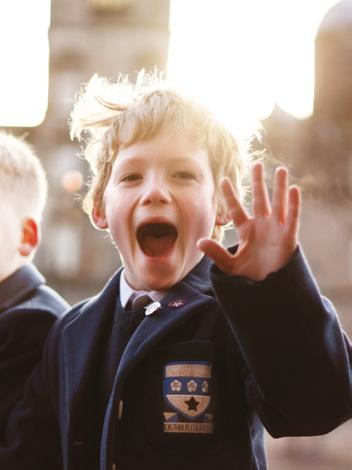


Publications are very much about their intended audience; a thought emerging as I read through the rich contents of this edition of Quadrangle.
A predominant feature is the continuous flow of achievements and accolades awarded to many Former Pupils, both testament to the calibre of professionalism in their respected fields but also the engendered notion of service that the school instills as the core of our ethos. Whether in the realms of Science, hospitality, academia or culture, the breadth of global achievements is astonishing.
Fascinating features on a myriad of topics course through the publication, with one in particular prompting a particular personal recollection. Former Pupil and Chair of the UK Infected Blood enquiry, Sir Brian Langstaff published his findings in May earlier this year. I happened to be in London and, by chance, walking past Westminster hall as the families of victims exited. To see, hear and feel the visceral emotion and relief of families on hearing the key findings, was in stark contrast to the busy norm of central London. If you are able to attend the public lecture given by Brian on Wednesday 4 June, 2025 in Edinburgh, it will be worth your while.
My visit to London was somewhat enforced having blindly volunteered to be part of Ride400, the cycle from Heriot’s birthplace in Gladsmuir to his resting place in London. A thought of being ‘good for me’ withered rapidly away on Day 1 but, as you will have read,
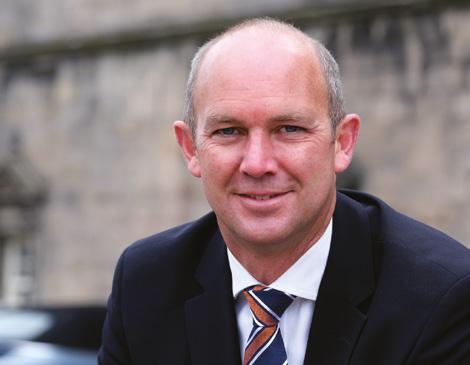
was completed by all. This was one of the many fundraising events undertaken by pupils, staff and FPs as part of the We are all George Heriot campaign, captured in the 2024 Diary. It has been a tremendous effort by those that have contributed in action, but also in support and I thank you all for the donations to the Bursarial cause.
Within ‘School News’ is the overview of another rather important publication – the Inspection Report from Education Scotland. You will see from the outcome the superb set of gradings and comments that mark George Heriot’s as the leading all-through School in Scotland. A brilliant achievement and
in no small part due to the quality, commitment and effort of the staff. The Report provides the assurance needed to our market in challenging times and the mandate to continue to strive for excellence in a rapidly evolving future.
To close, reading Quadrangle provides a good feeling. To see the accomplishments, the interests, the events that engage our school community is genuinely heartwarming. I hope you feel that the fantastic work of the development team throughout the year, and in creating this Quadrangle edition, provide the same evocative feelings of warmth, camaraderie and pride to its intended audience.









